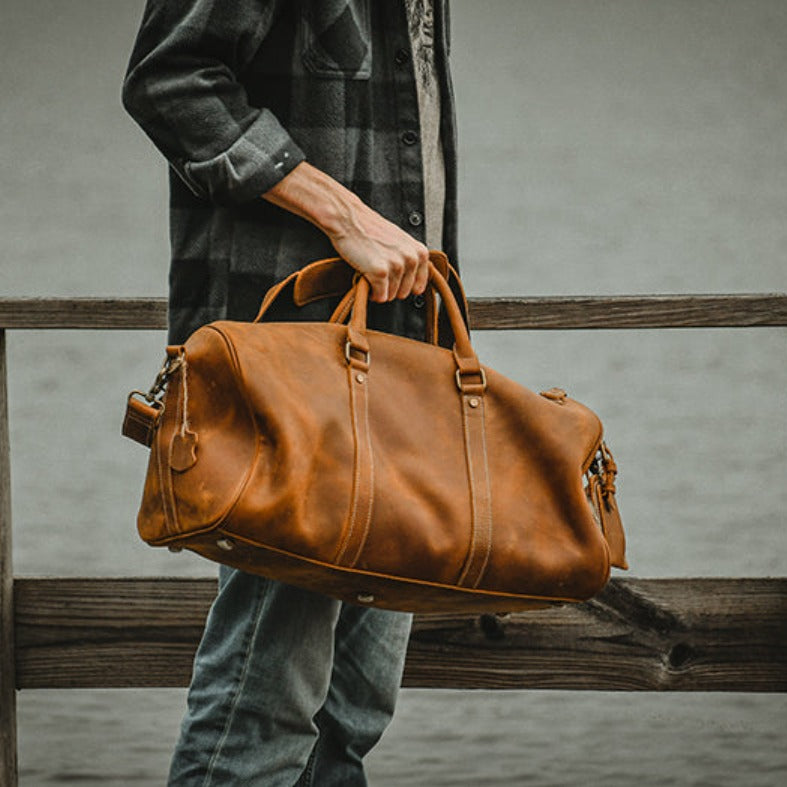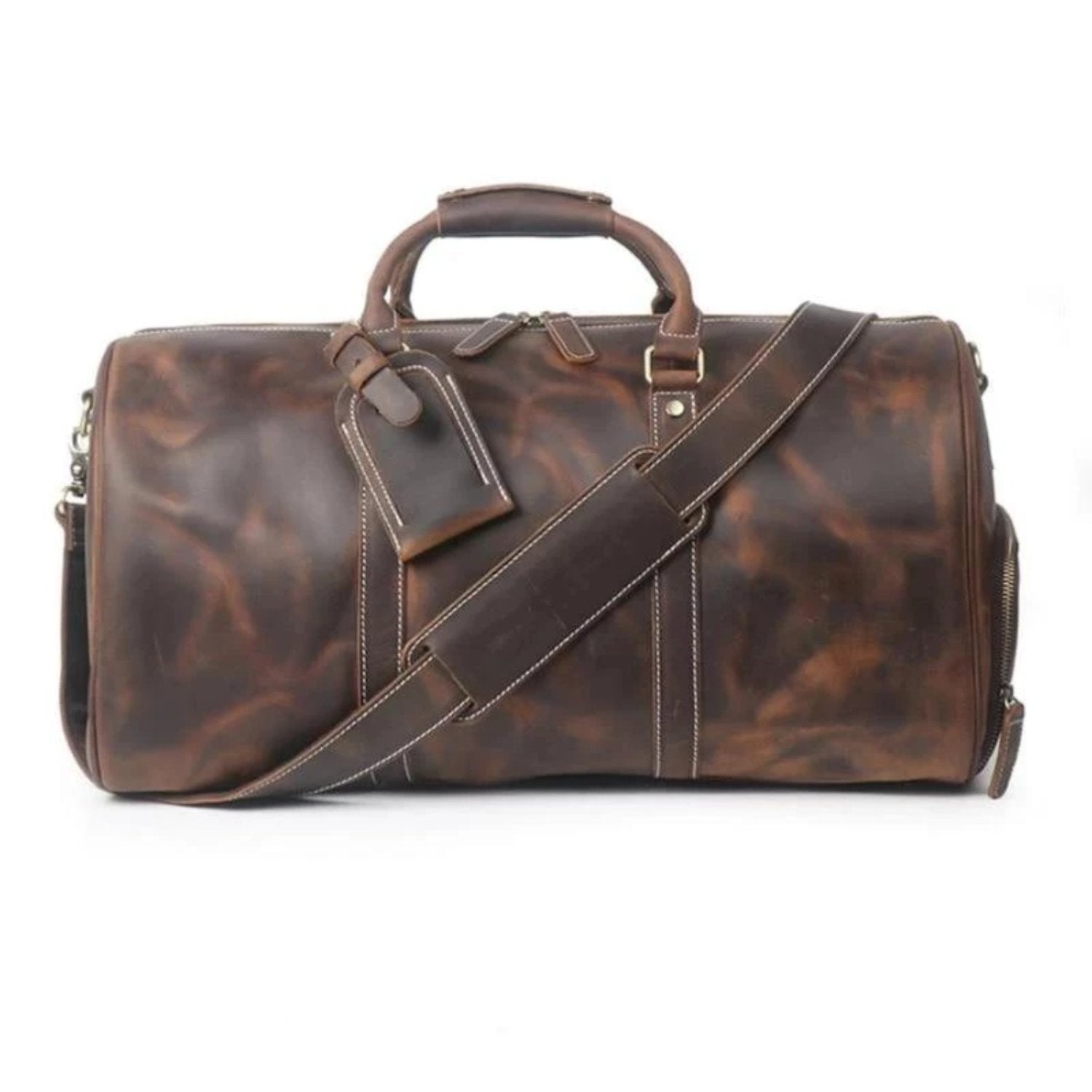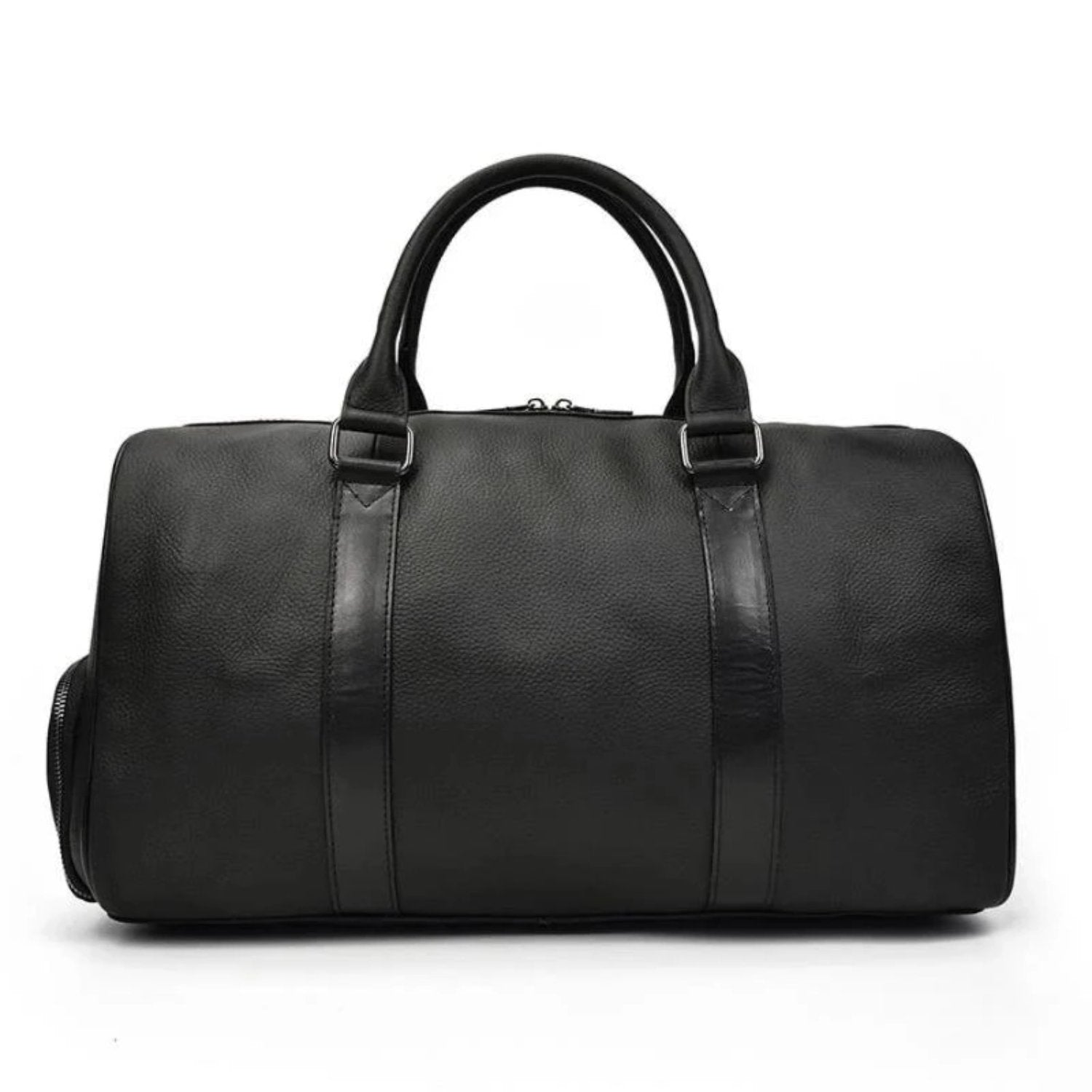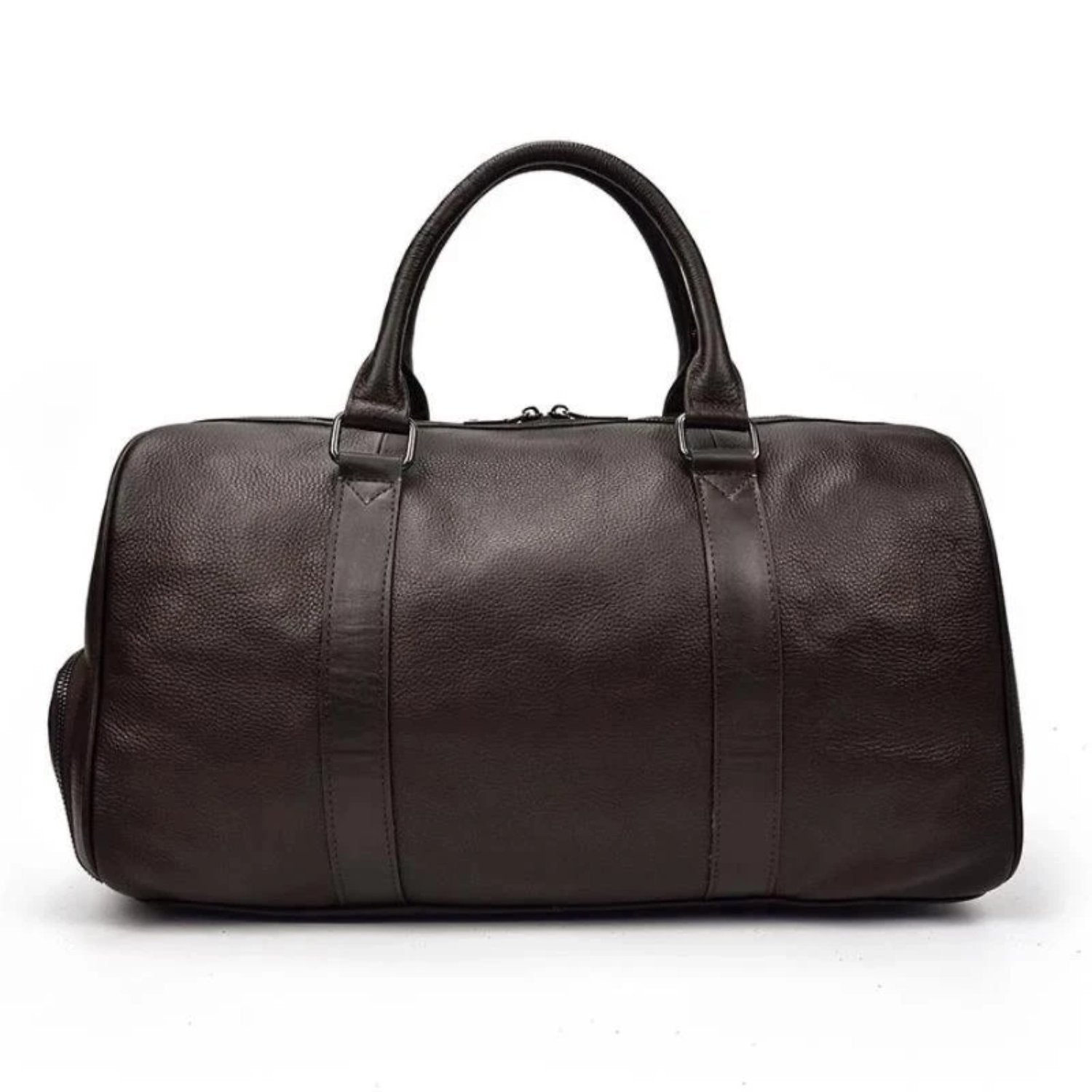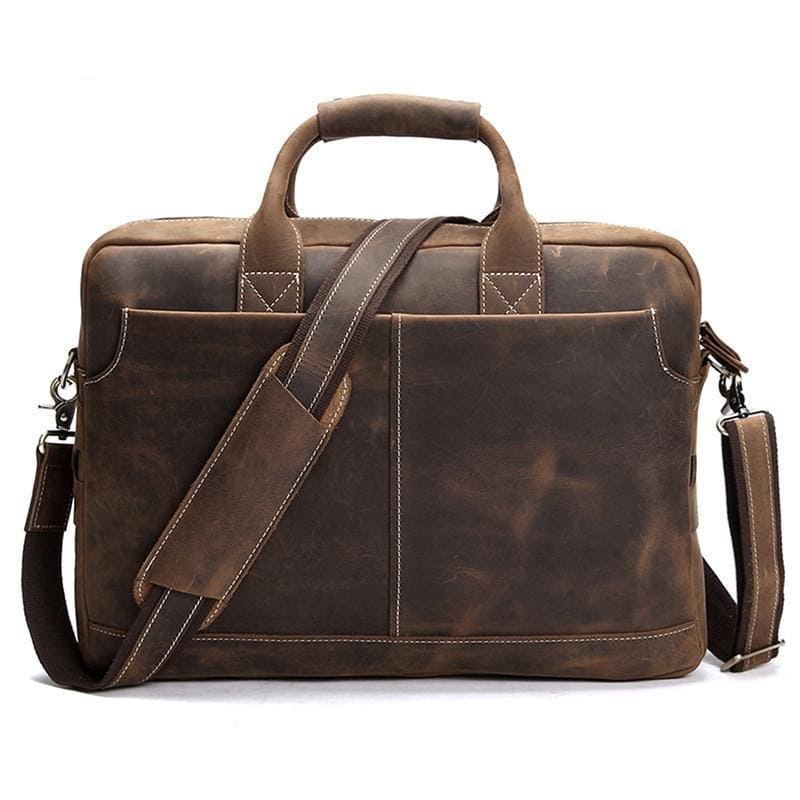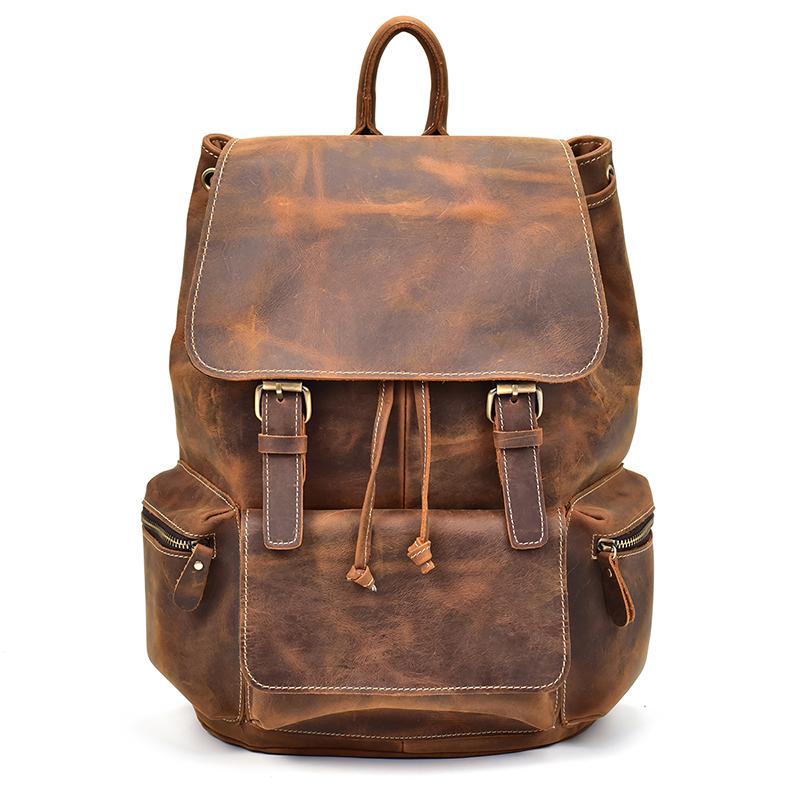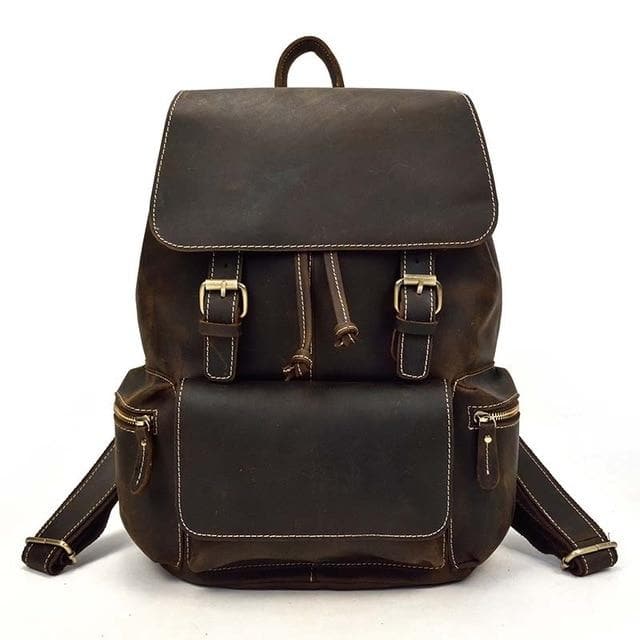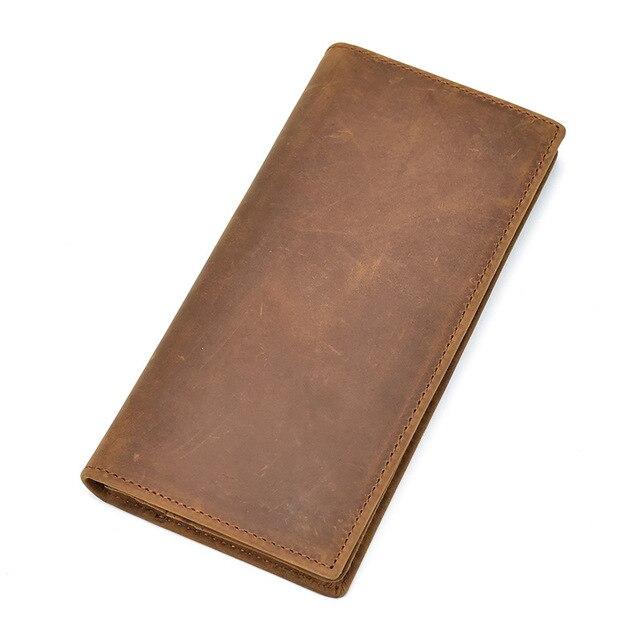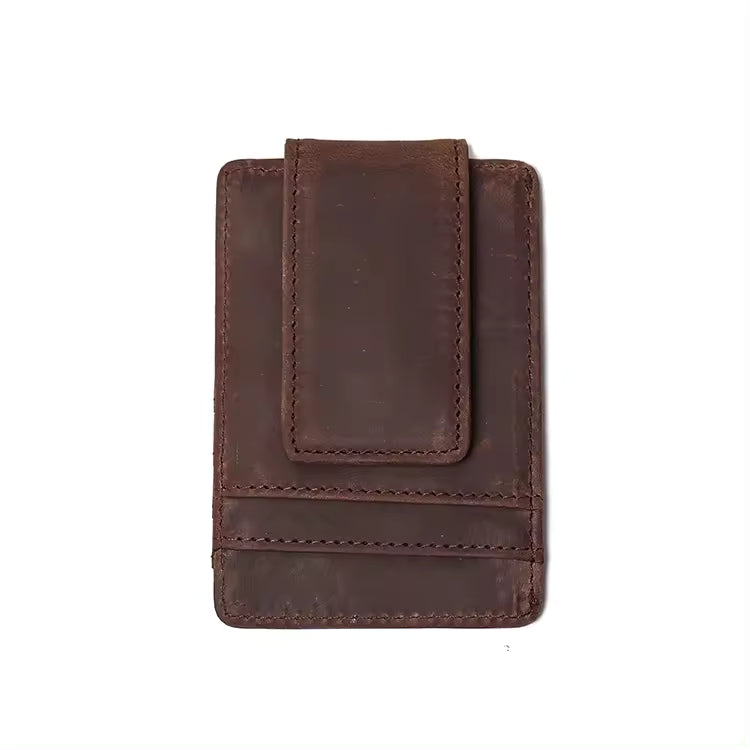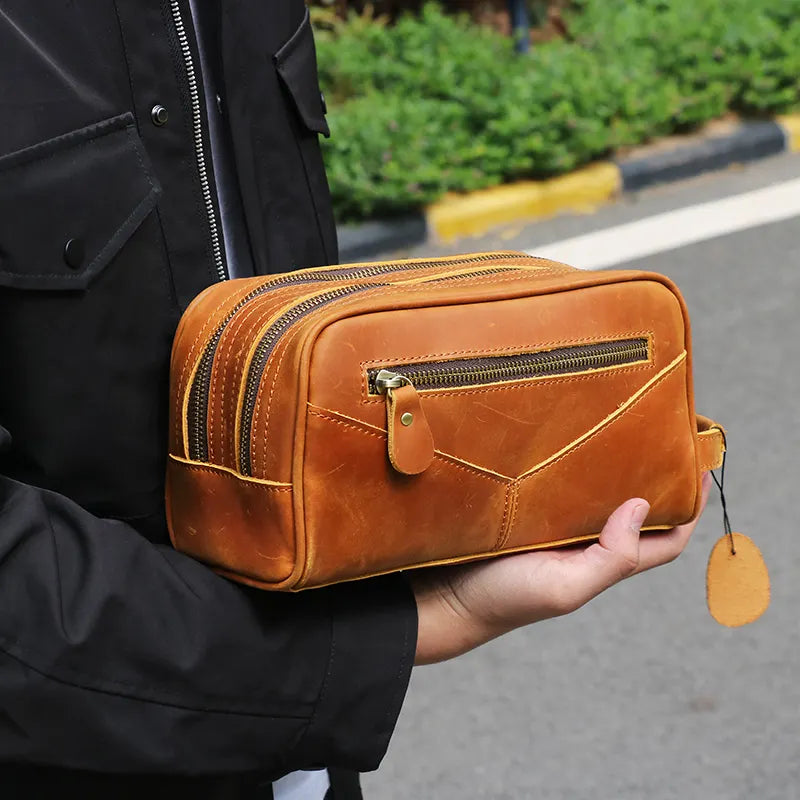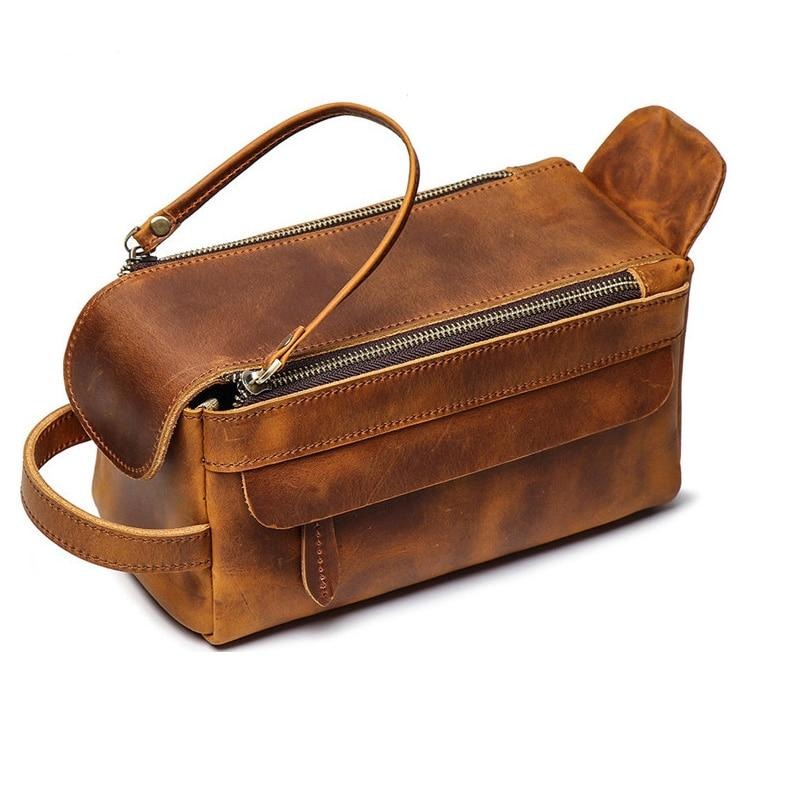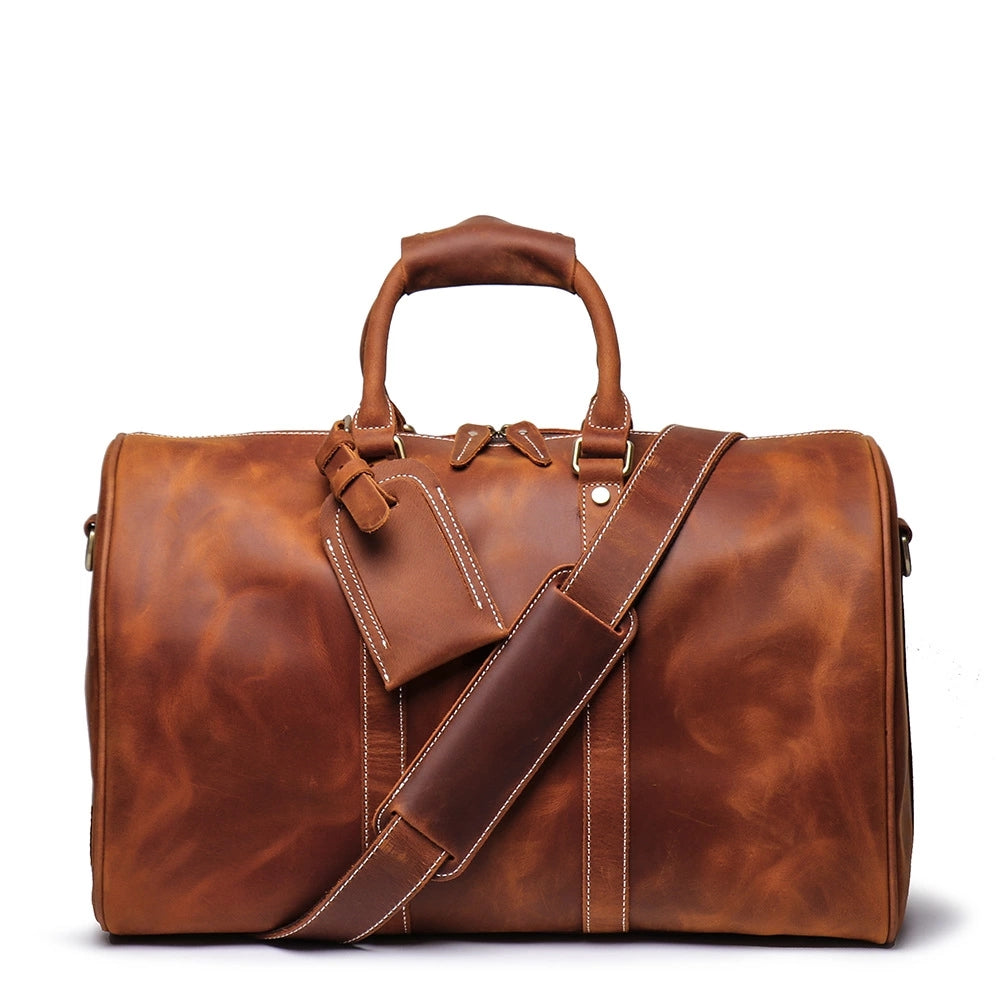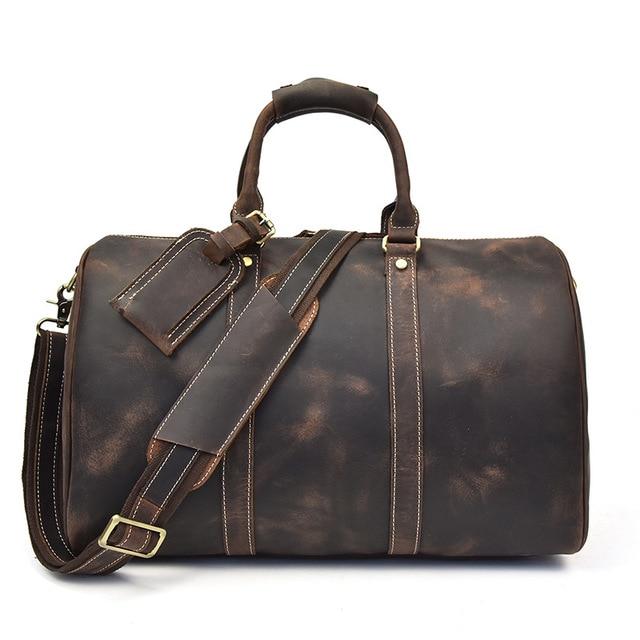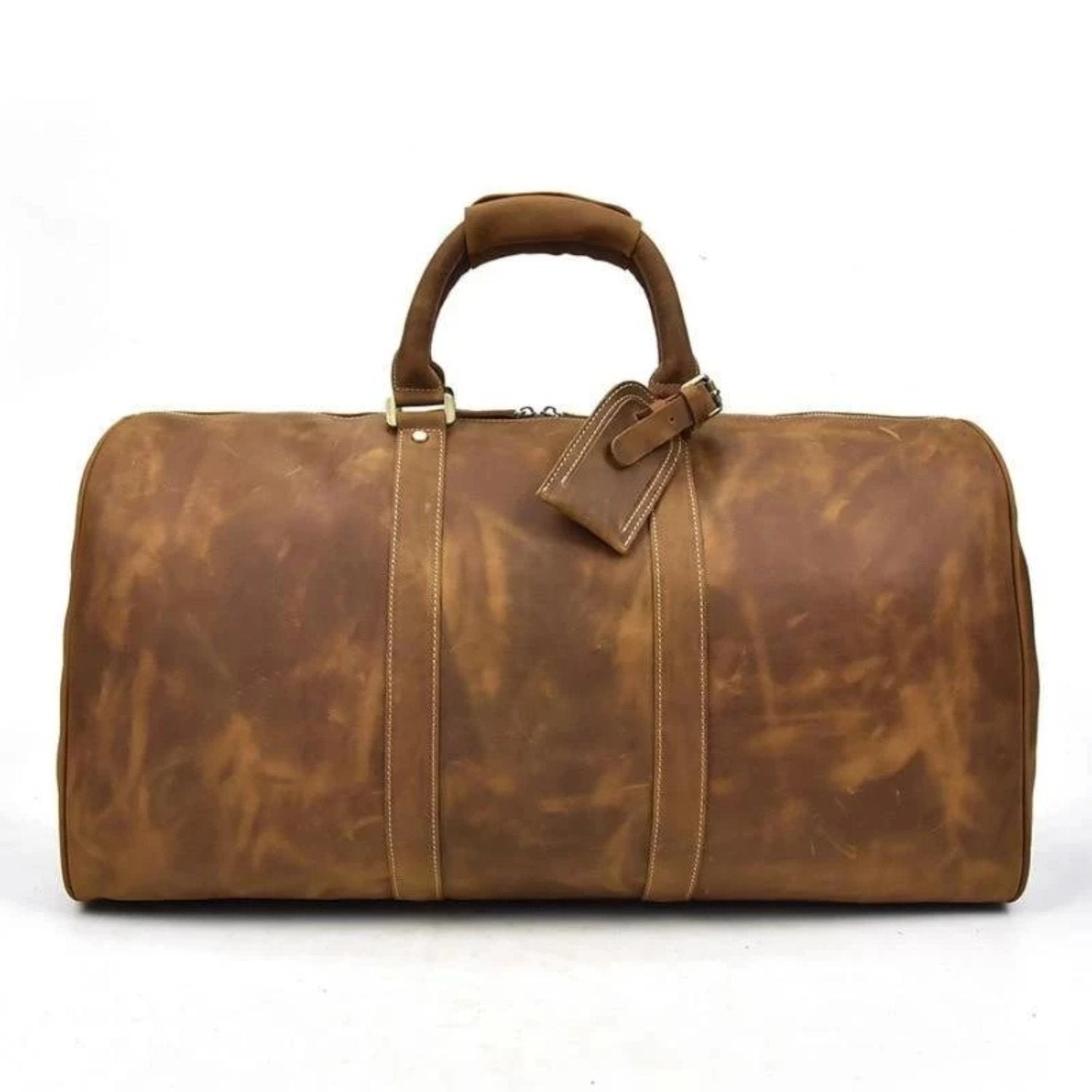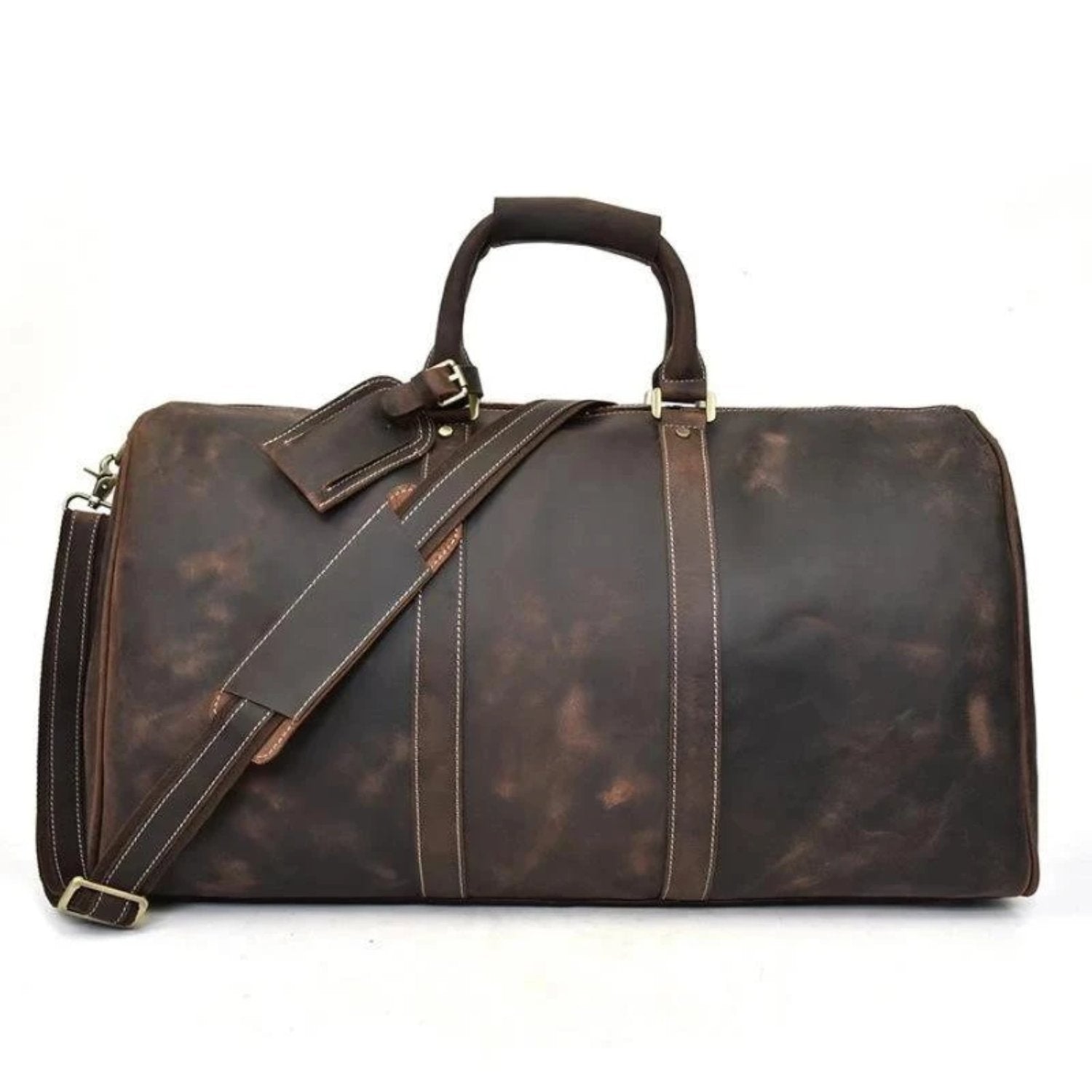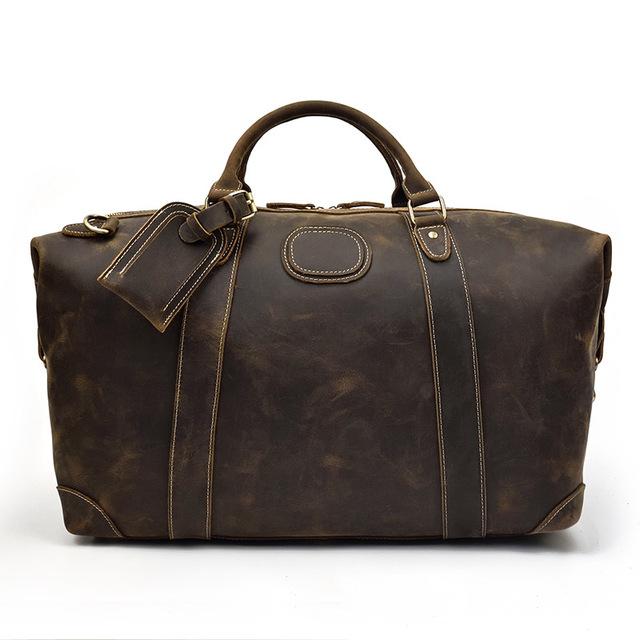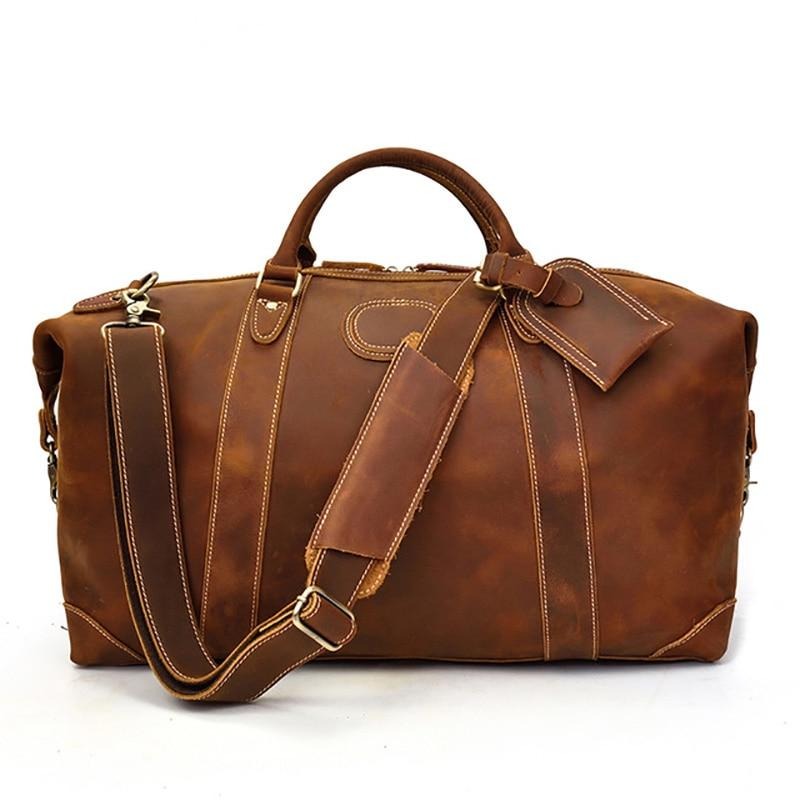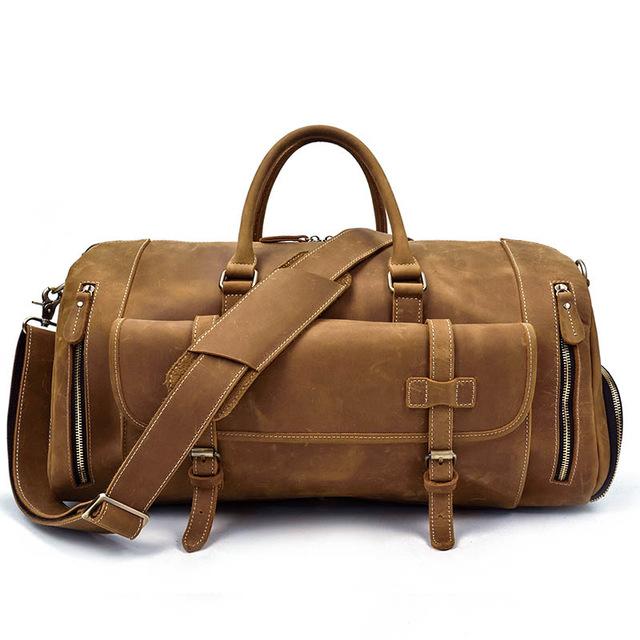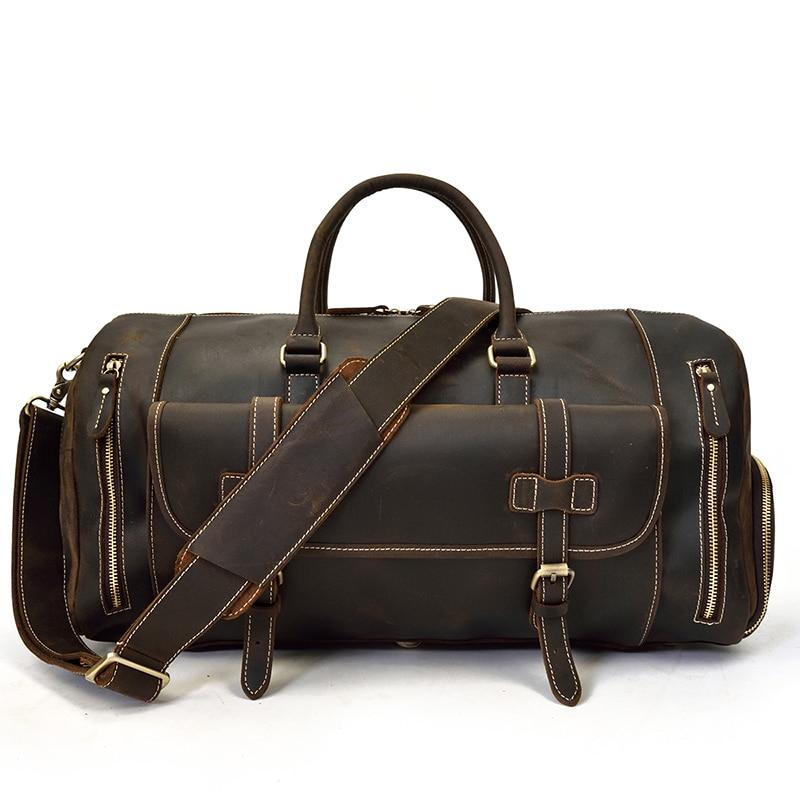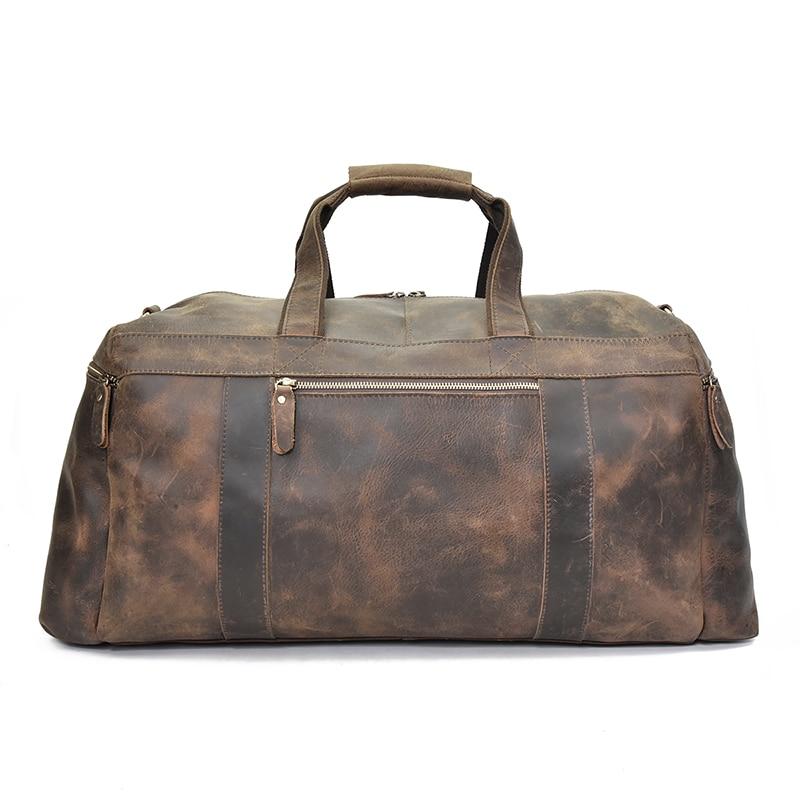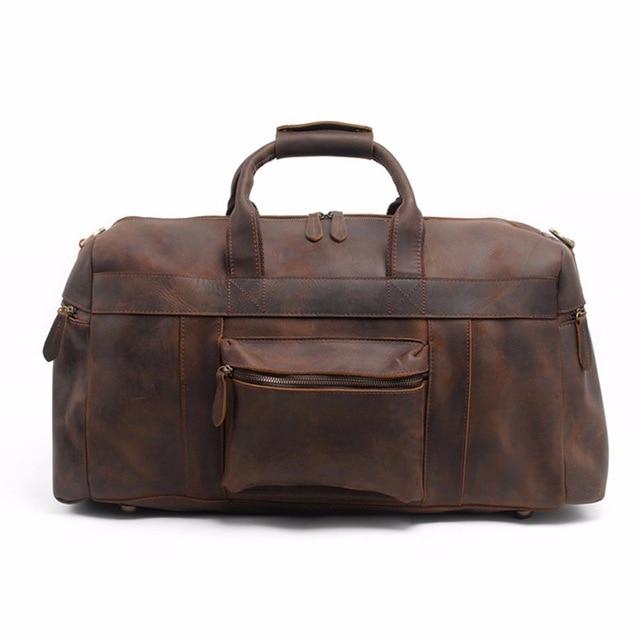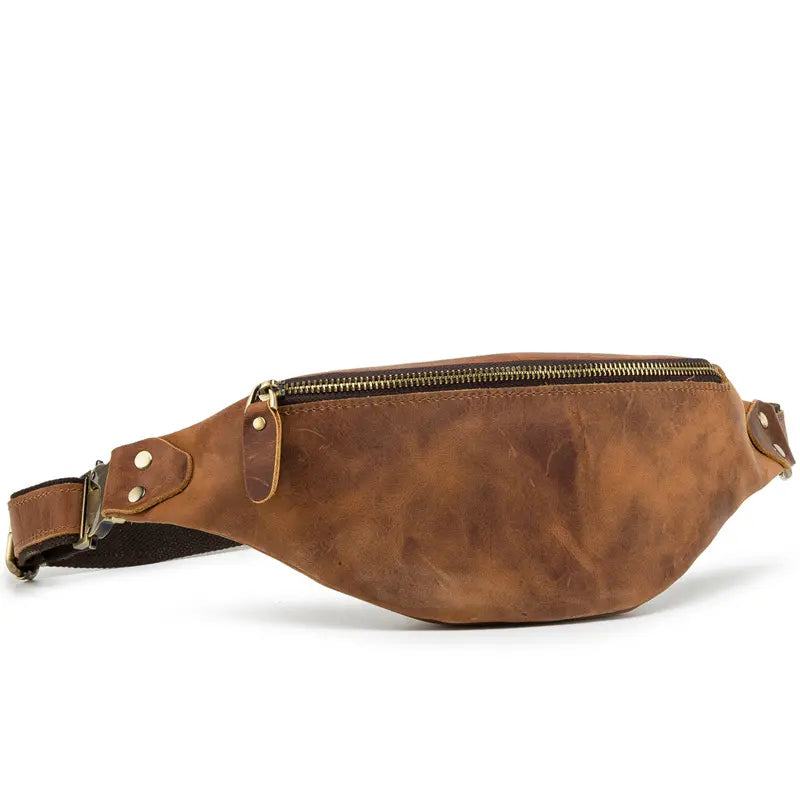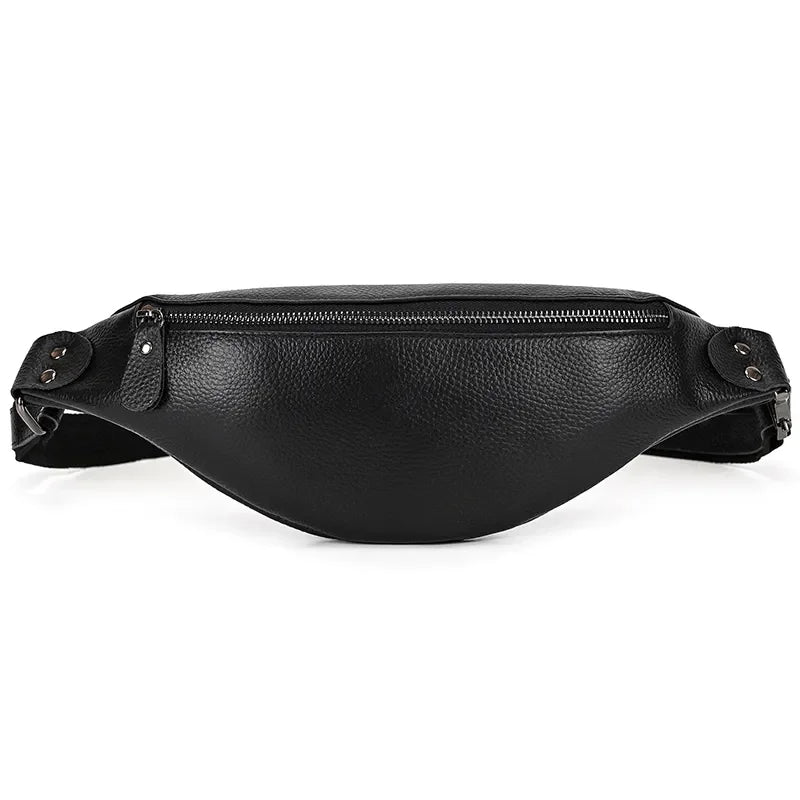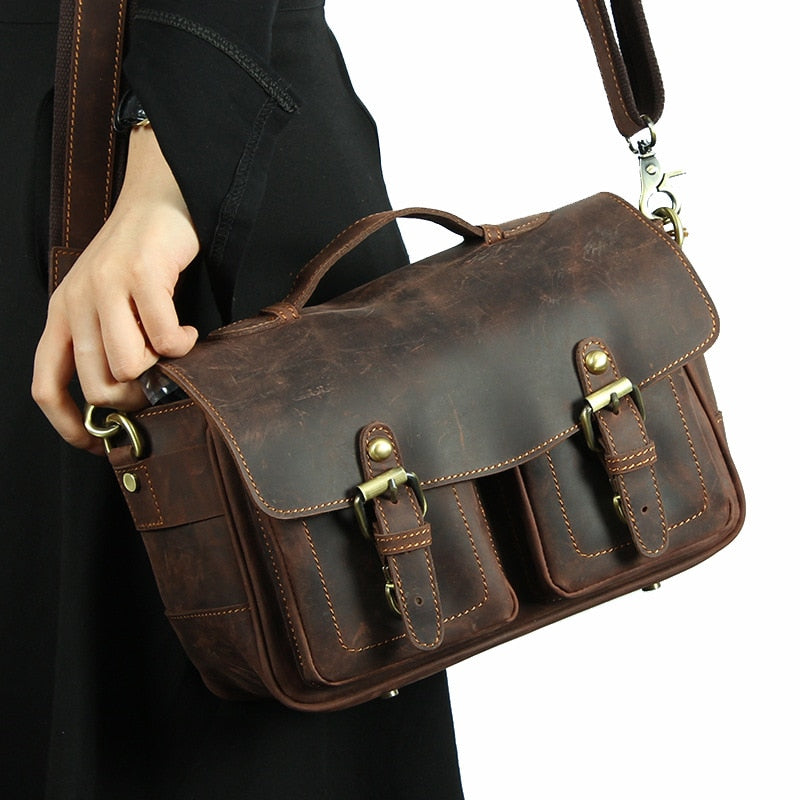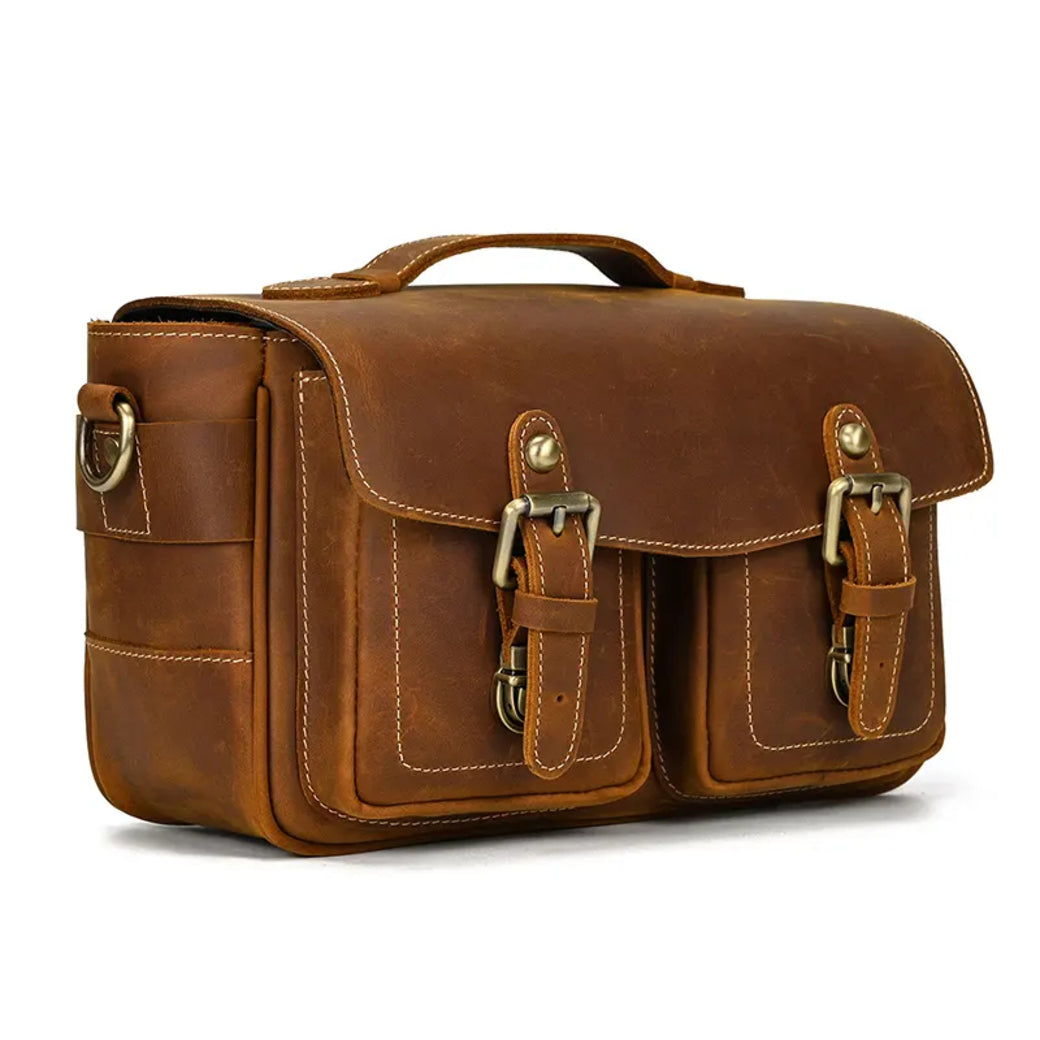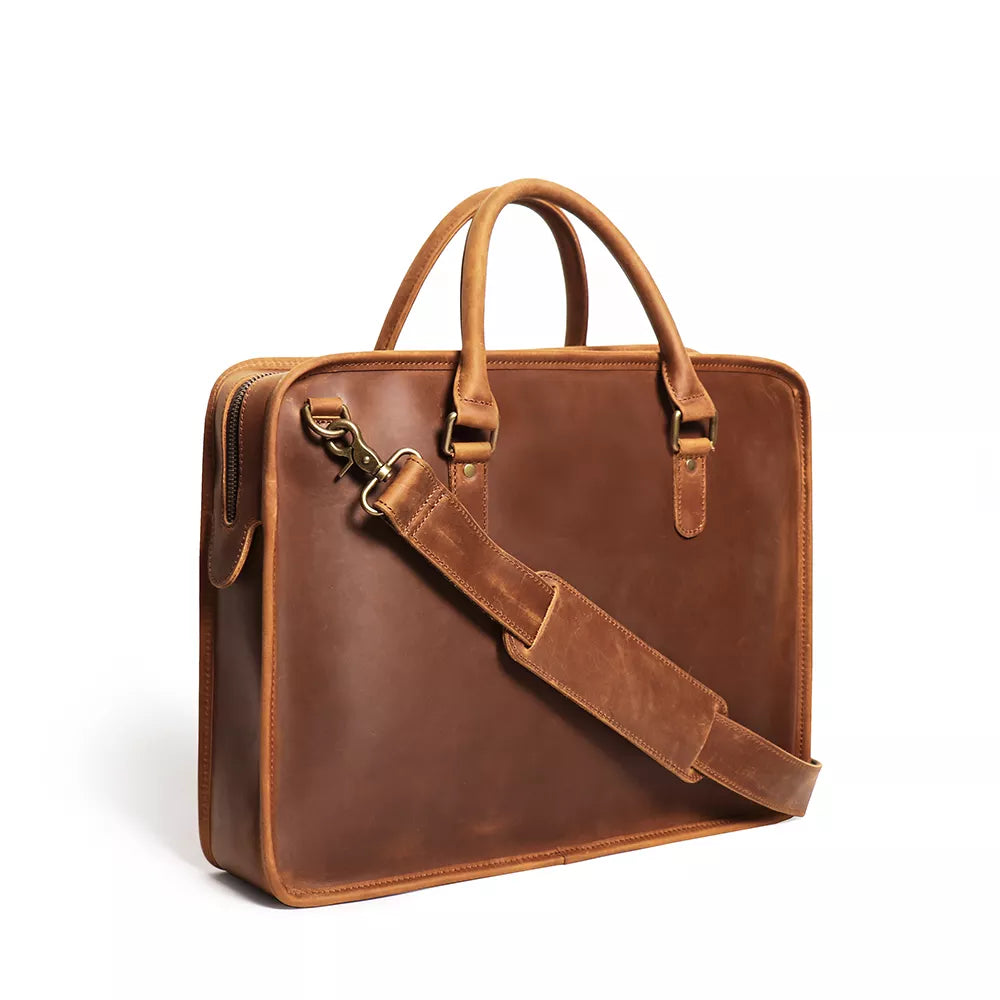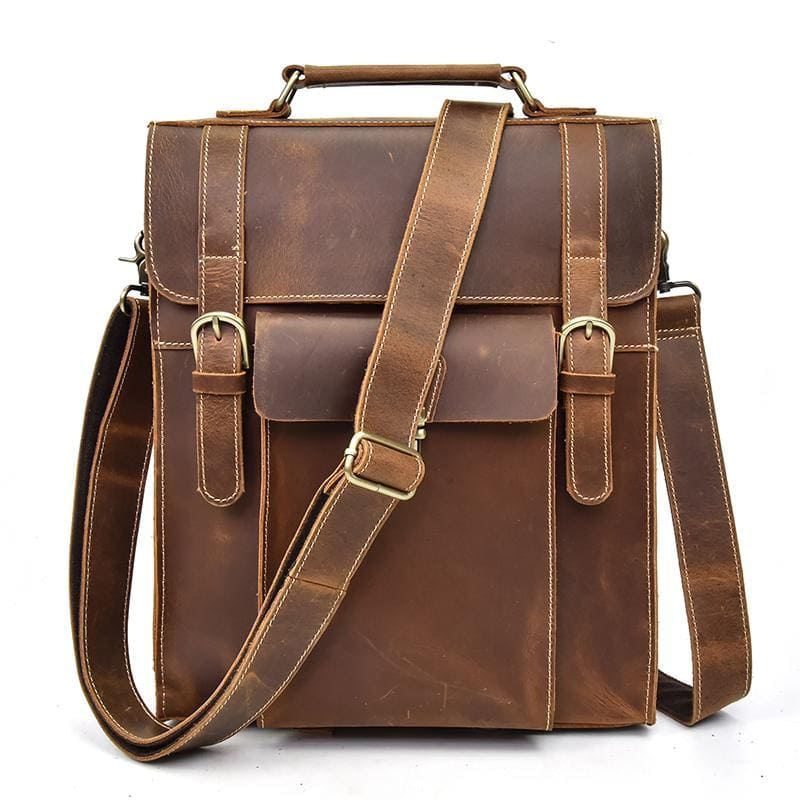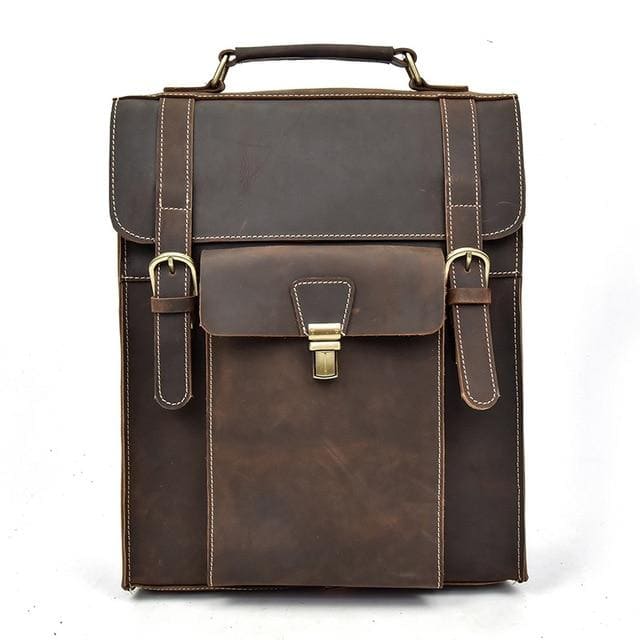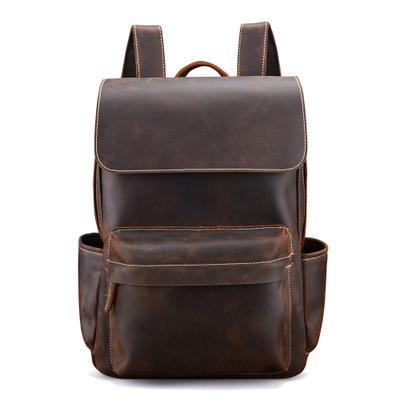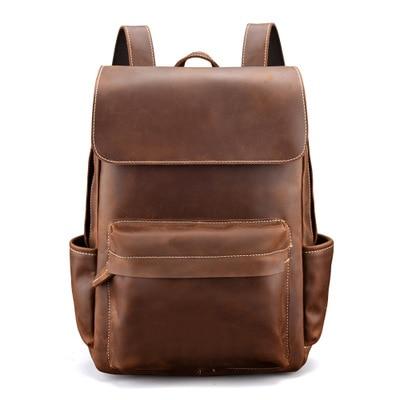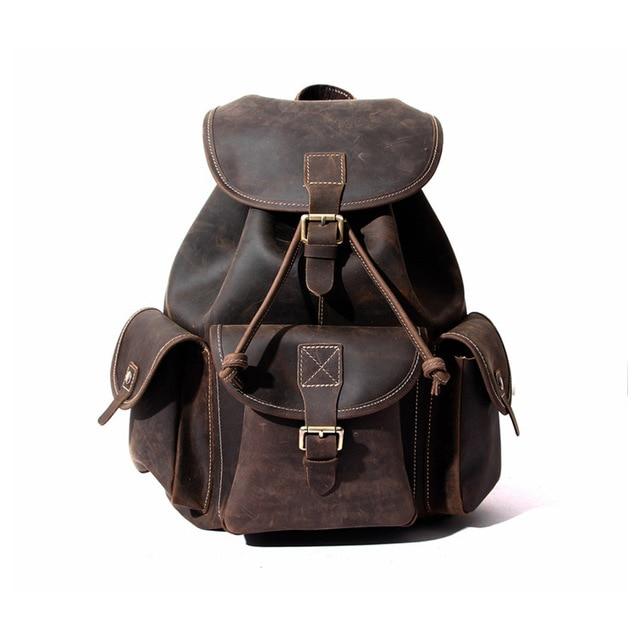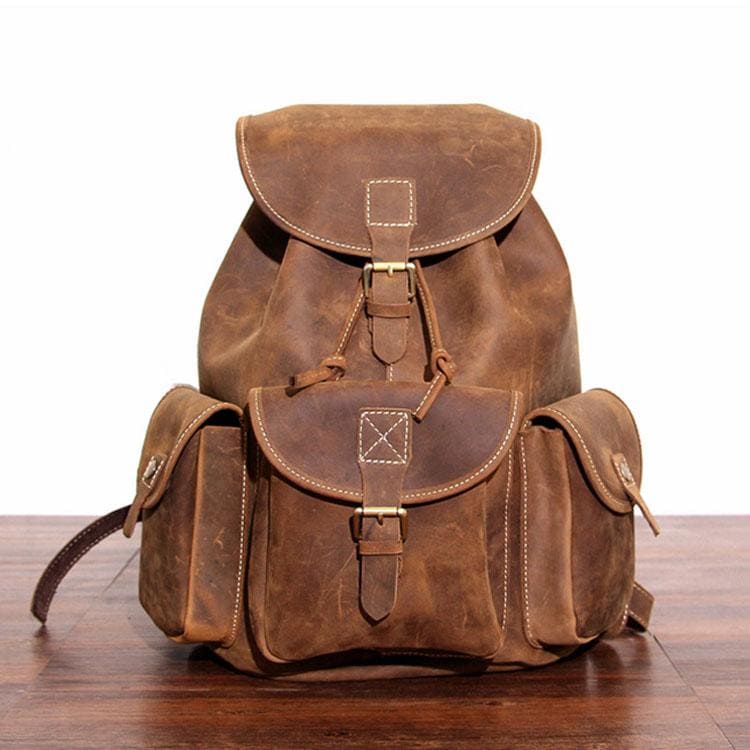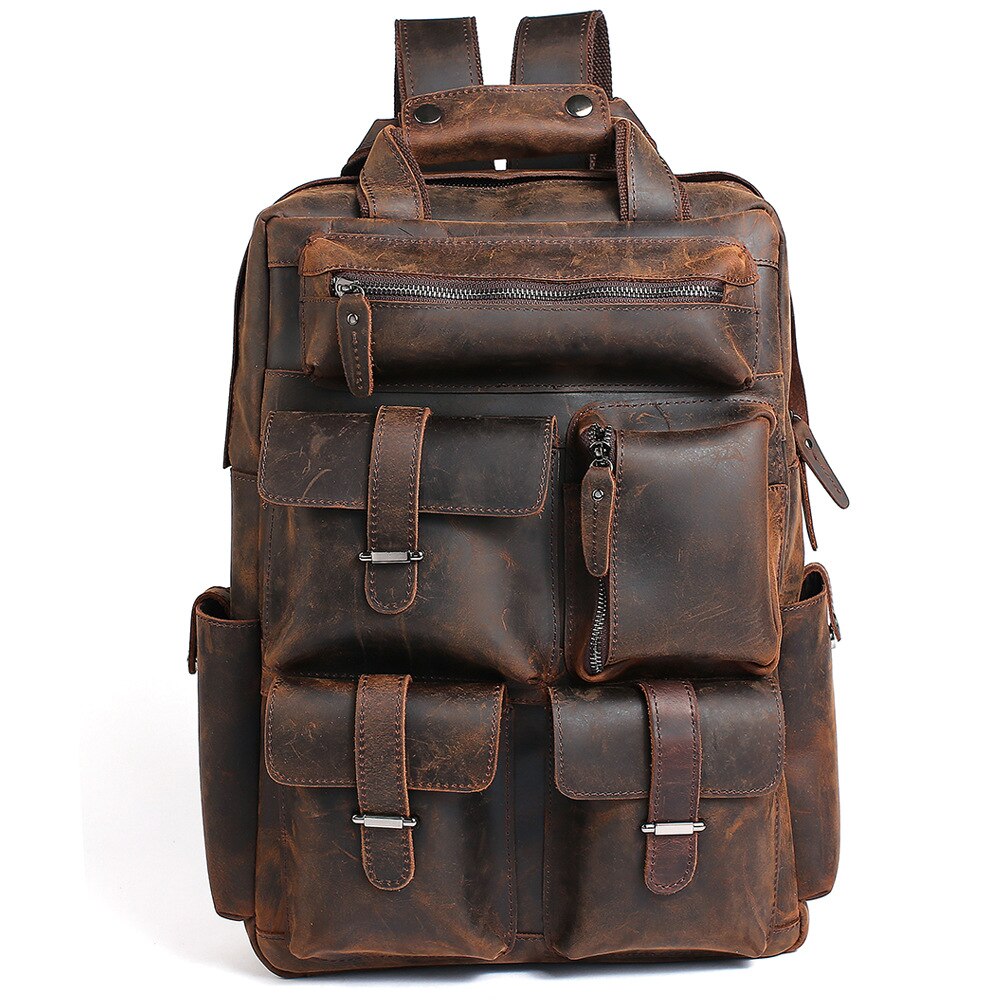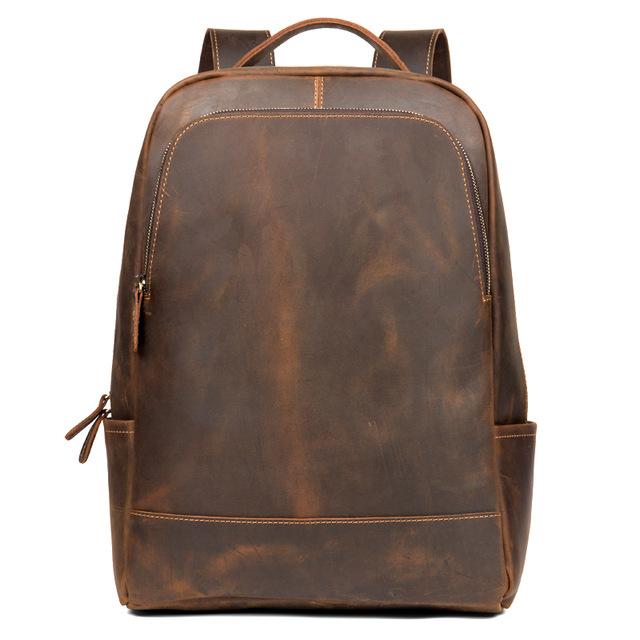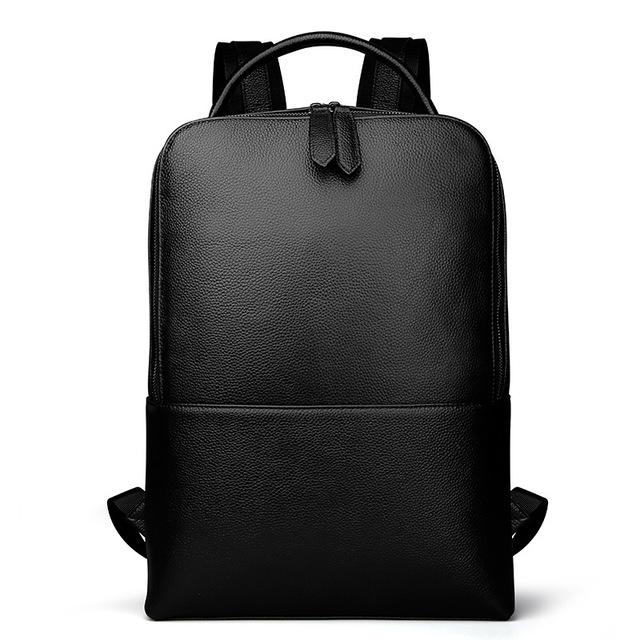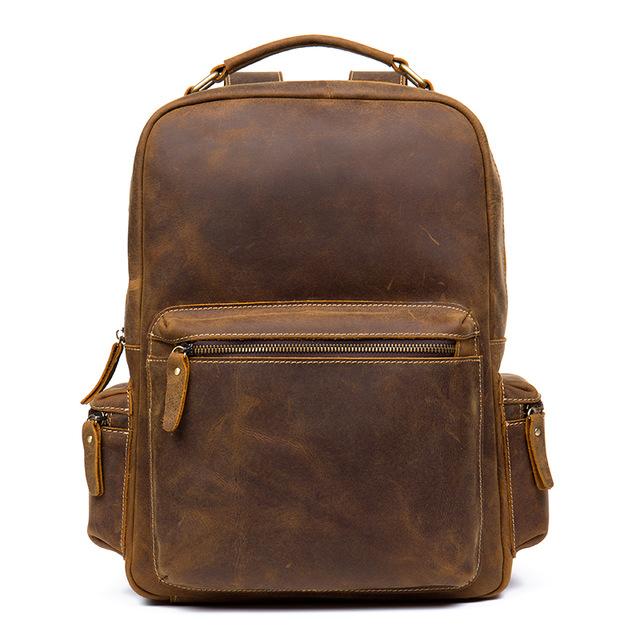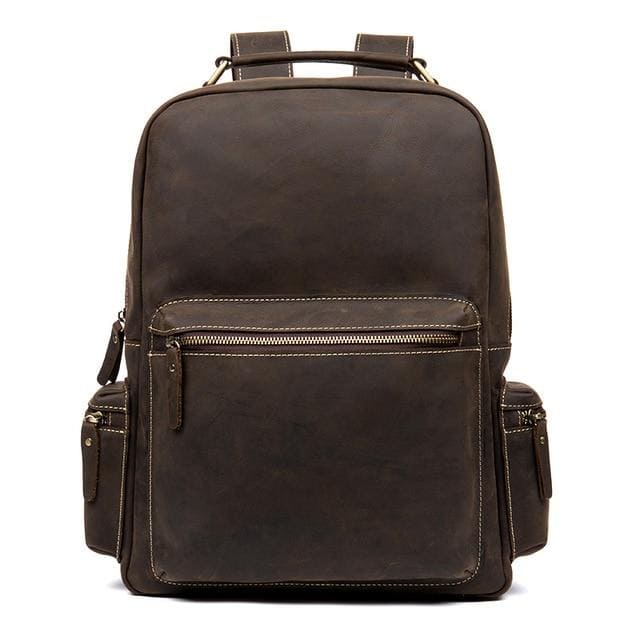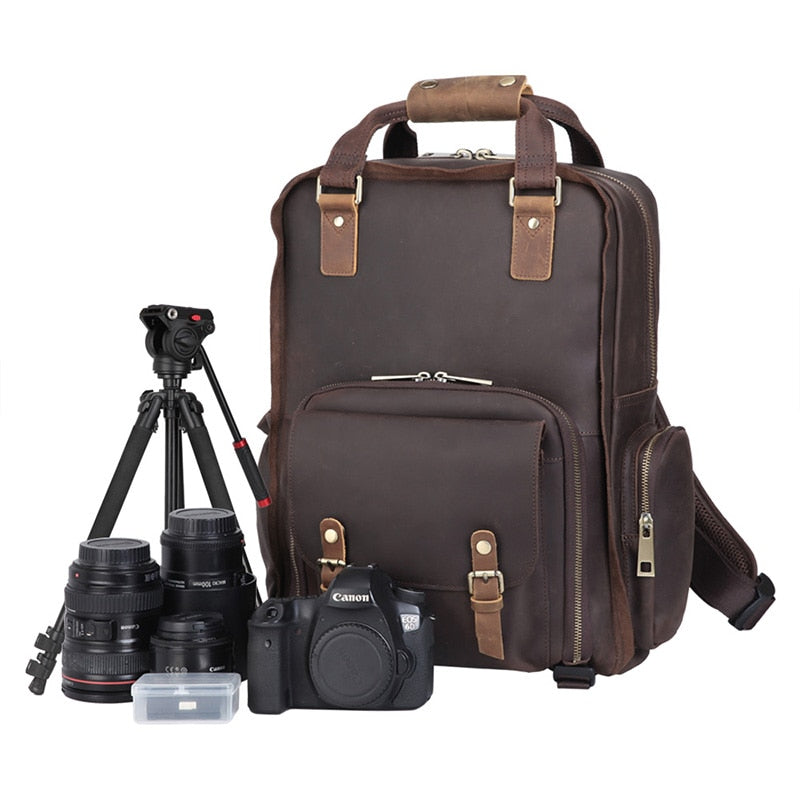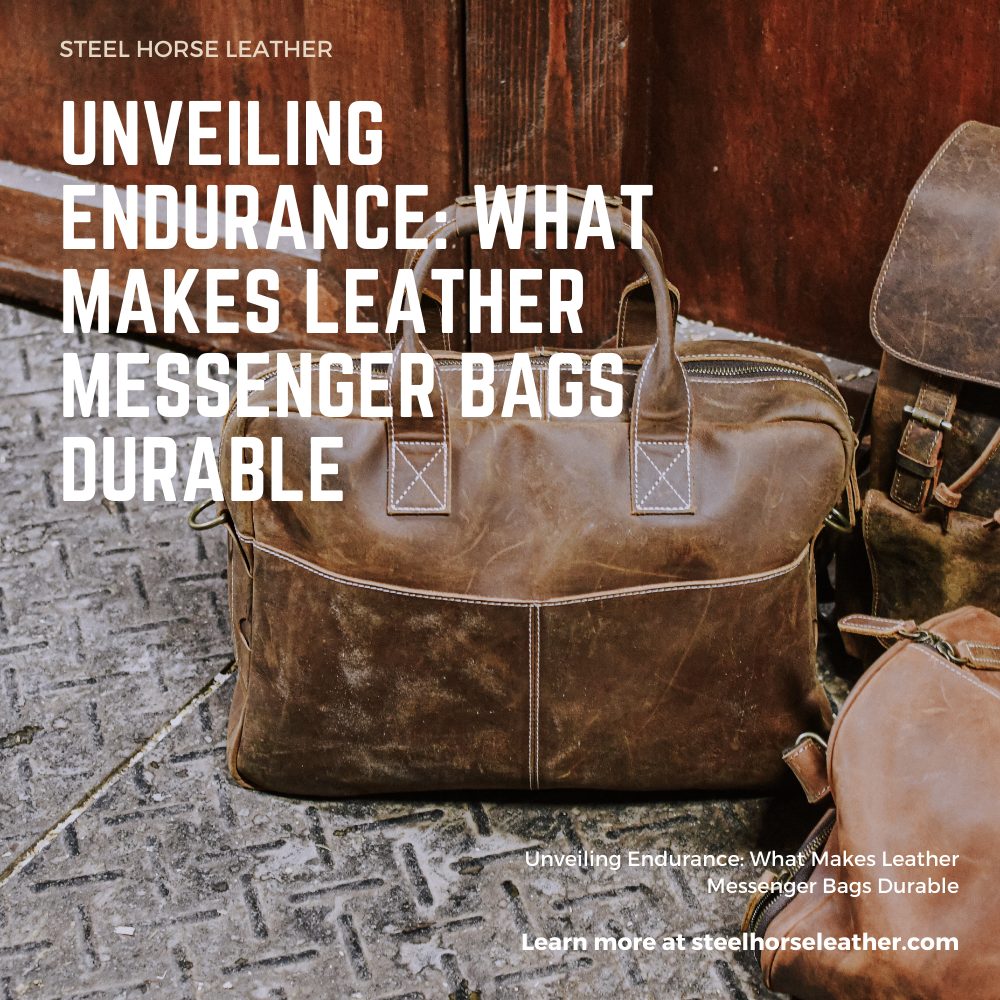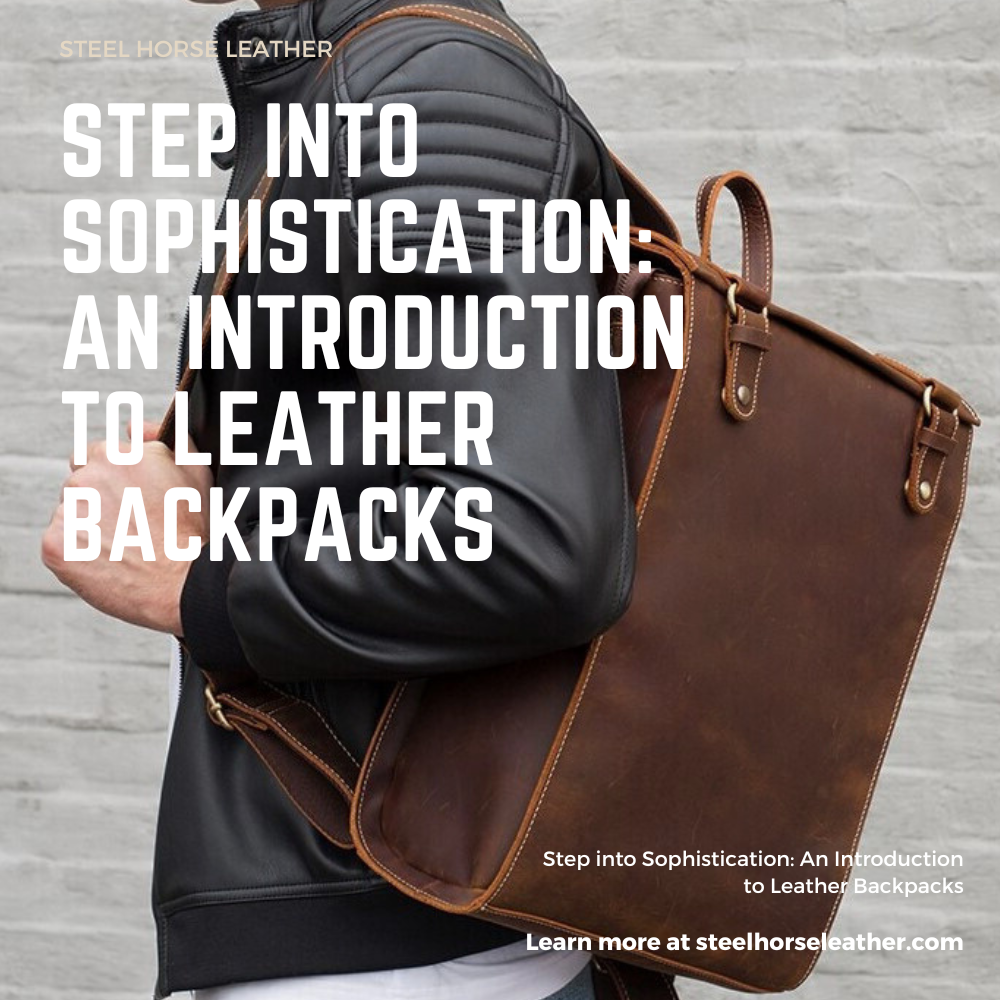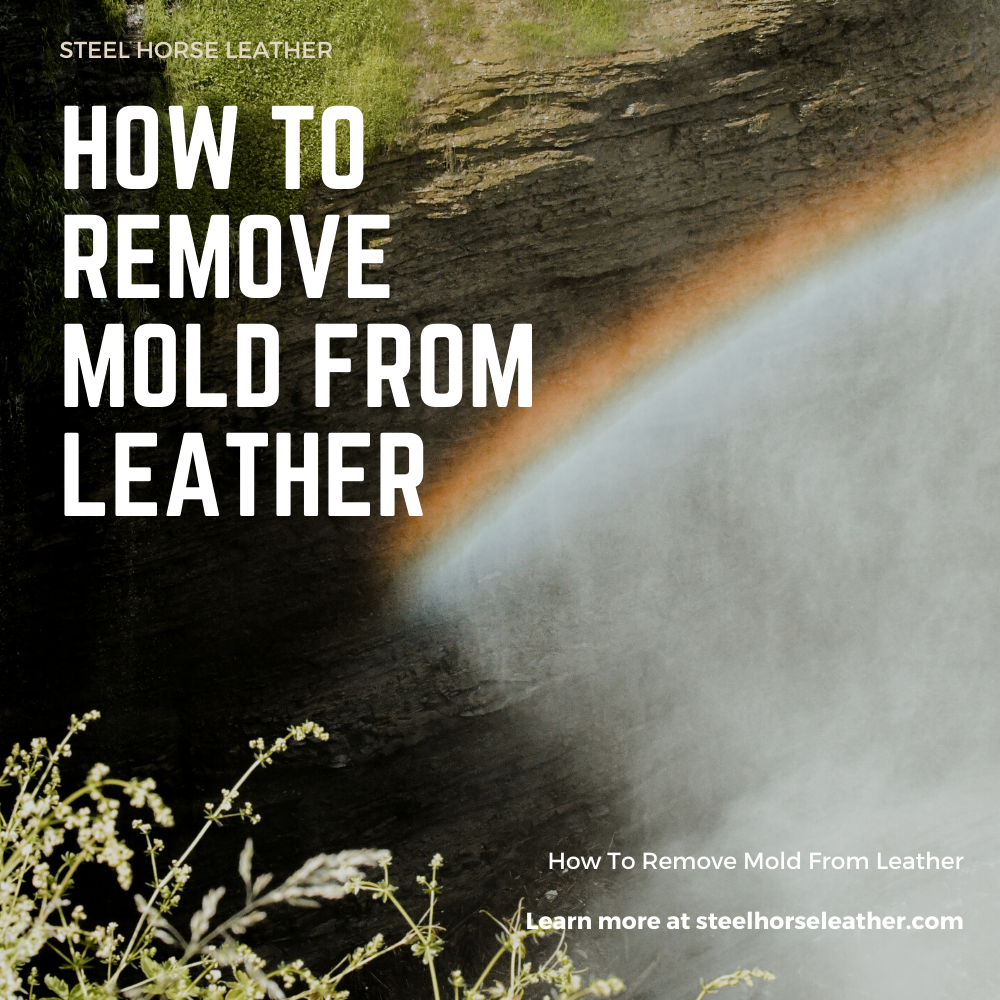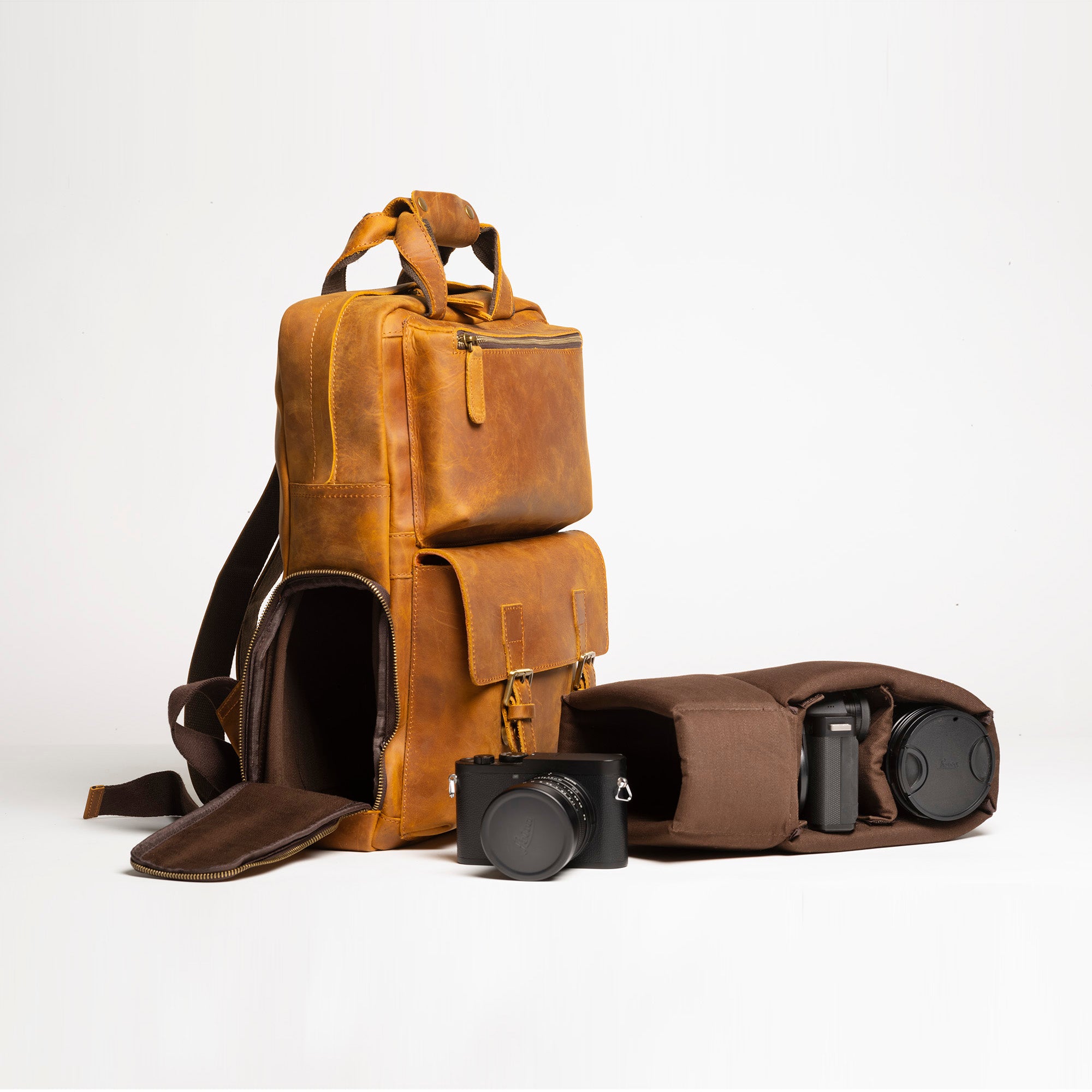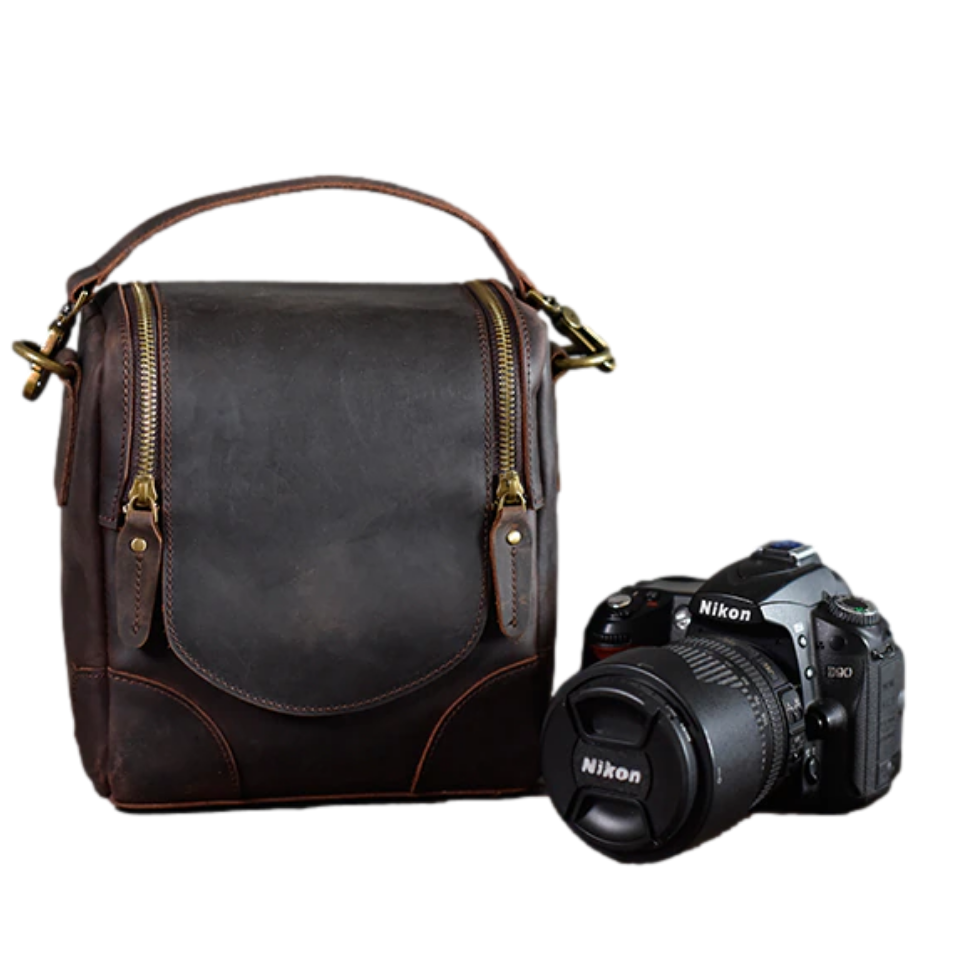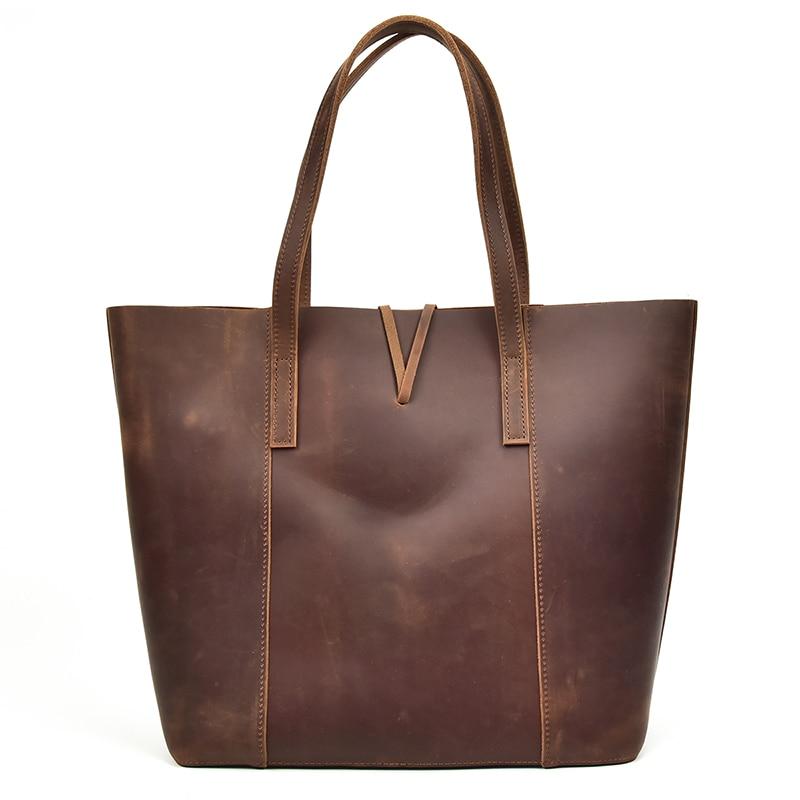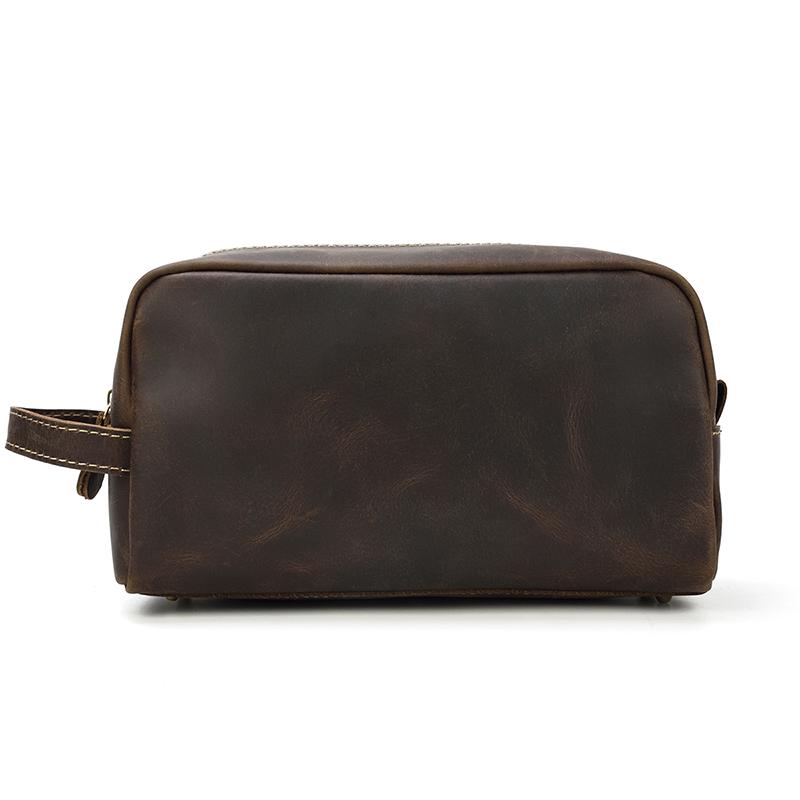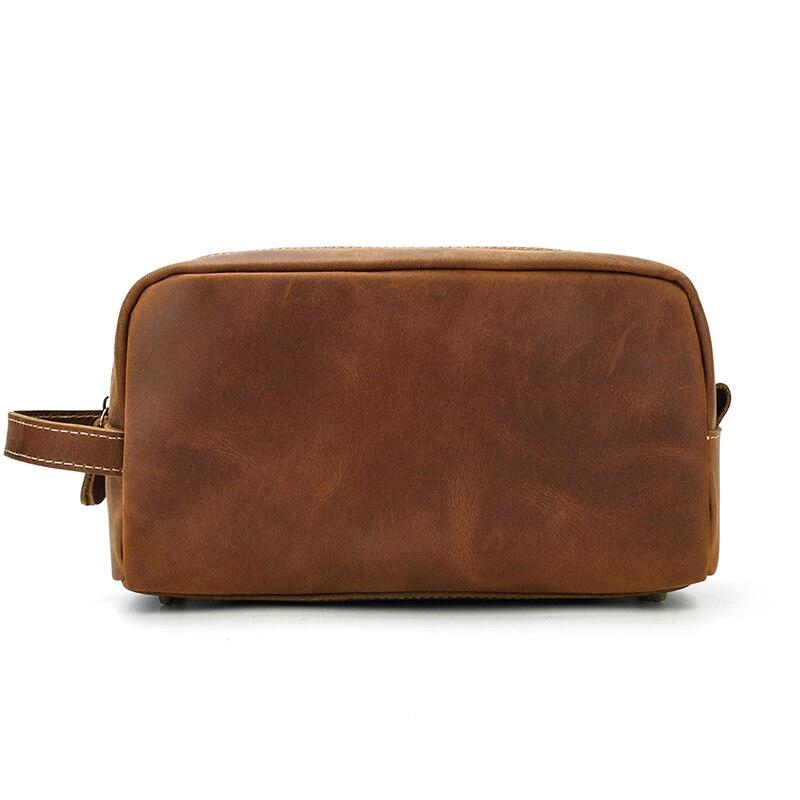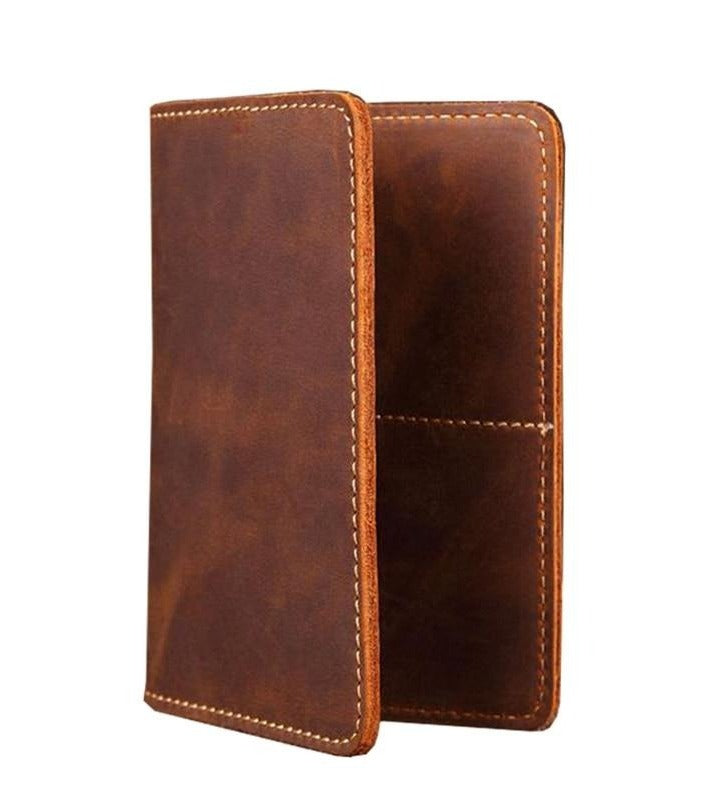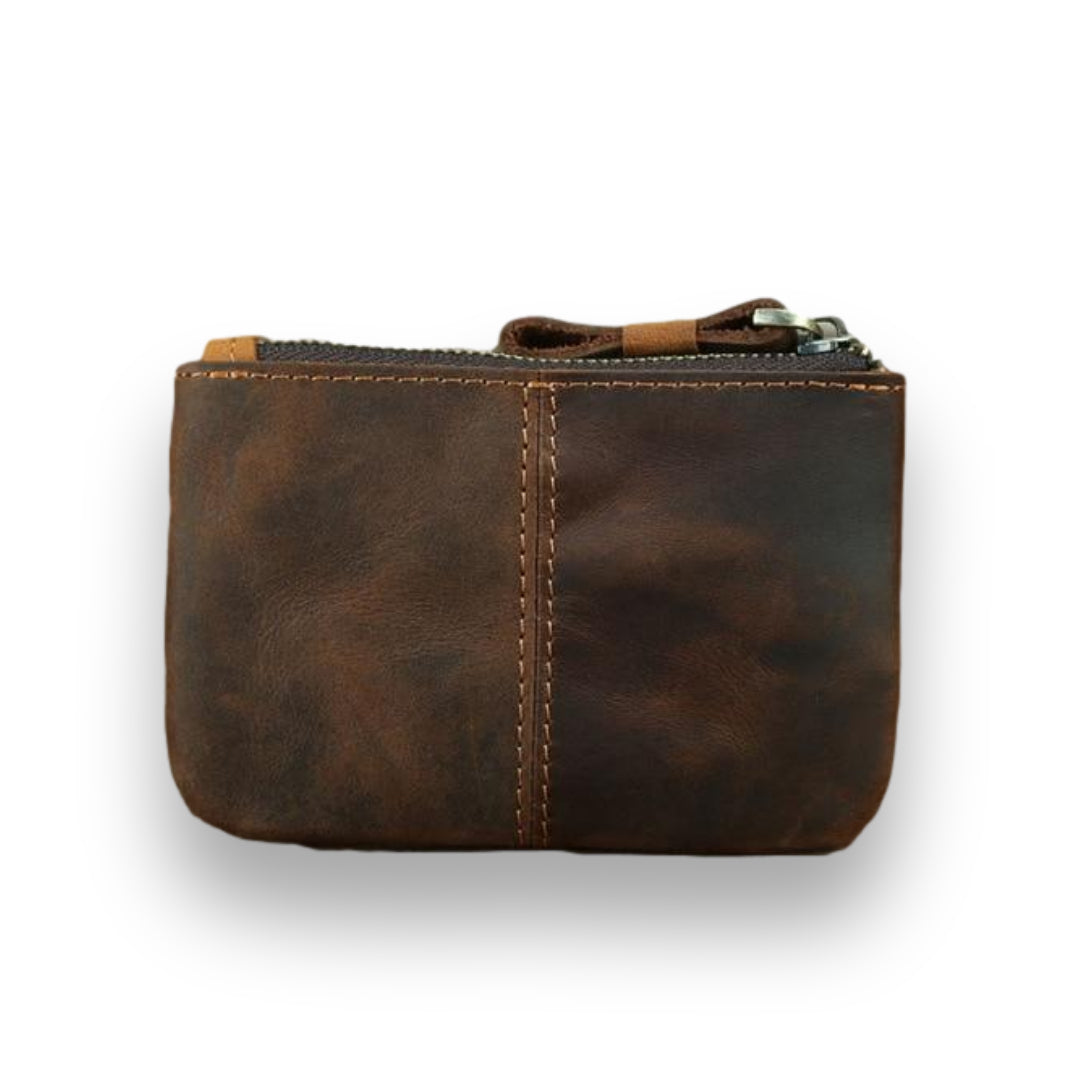Top grain leather is among the highest quality leather available in the market. It possesses characteristics that make up great leather and has a beautiful appearance that manifests its great quality. To fully understand this wonderful leather, we need to explore its origins, manufacturing process, characteristics, and how it compares to other leather types.
Key Takeaways
- Top grain leather is the second-highest quality leather available, offering a balance between durability and aesthetic appeal through its uniform appearance.
- The manufacturing process involves splitting, tanning, and finishing, with the splitting process being crucial in defining top grain leather's characteristics.
- While not as durable as full grain leather, top grain leather offers superior flexibility and a more refined appearance, making it ideal for luxury items and furniture.
- Proper maintenance, including regular cleaning and conditioning every six months, is essential for extending the life of top grain leather products.
- top grain leather's versatility makes it suitable for various applications, from furniture to accessories, though it's less breathable than full grain leather.
Origin and Sources

Most types of leather these days are usually from the skin of cows or cowhides. This is because cowhides are easily and readily available, they have great size, and have amazing quality. Likewise, most of the top grain leather we see today comes from cowhide. However, depending on the availability and use, leather can also come from other animals. Other than cows, animals that are common for making leather are pigs, sheep, deer, horses, and kangaroos. There are also some exotic leathers out there. These exotic leathers usually come from alligators, ostriches, elephants, snakes, frogs, and stingrays.
For simplicity and because it is the most common practice today, top grain leather usually comes from cowhide. Moreover, we may also refer top grain leather as real leather, similar to full grain, pure aniline leather, semi-aniline leather, and pigmented leather. This is because they come from real animal skin. On the other hand, we call those that are not made from real animal skin faux leather or fake leather. The difference whether real or faux affects the leather grade significantly.
The Influence of Animal Life on Leather Quality
The quality of leather is significantly influenced by the life and habitat of the animals from which it originates. Factors such as breed, age, and living conditions play pivotal roles in determining the final quality of leather products. For instance, leathers sourced from animals raised in stress-free environments often exhibit fewer blemishes, stronger fibers, and more consistent grain patterns, contributing to their overall durability and aesthetic appeal. This is particularly true for cattle, as their skin can reflect their upbringing, with cows that graze in natural pastures yielding hides of superior quality. Furthermore, the diet and care of the livestock also affect the skin's health, which, in turn, translates to a finer leather.
In contrast, animals that are subjected to harsh conditions or poor nutrition may produce leather that is more prone to imperfections and carrying an uneven texture. The thoughtful selection of animal sources not only ensures the materials are of high caliber but also supports ethical practices in the leather industry. Understanding the influence of animal life on leatherquality opens up avenues for consumers to appreciate the intricacies of their leather goods, ensuring informed choices and a more conscious approach to leather consumption.
Recent research has further validated these observations, demonstrating that leather sourced from animals raised in stress-free environments tends to exhibit fewer blemishes and a more robust grain structure, thereby contributing to a higher quality product (Li et al., 2019; Silambarasan et al., 2015). This scientific evidence underscores the importance of ethical sourcing practices in producing premium top grain leather.
Manufacturing Process
The process of making Top Grain Leather is very similar to the process used to make any other leather products such as full grain. However not similar to making genuine leather.
Splitting
What really defines top grain leather is the splitting process. This is usually done when the animal skin is too thick to work with. The hide is therefore split into layers. The different layers of animal skin likewise offer different characteristics. Some layers are more strong and durable than others. Other layers also have a more uniform look while others have a natural leather look. Splitting leather is usually done by cutting the leather horizontally. Other methods of reducing the thickness of the hide are sanding and buffing the topmost surface. Splitting the leather is all done during the pre-tanning stage. It is likewise the stage where we clean and prepare the hide for tanning.
Why do we split leather?
We split leather hide mainly for two reasons. The first is when the animal's hide is too thick. Thick leather is very hard to work with because it is not very flexible or bendable. It will therefore require more manpower. We, therefore, split the leather to reduce its thickness, making it easier to work with since it now because more pliable.
The second reason is to give the surface a fresh start. Animal skin usually has many imperfections. On its surface, we may usually see some scratches, blemishes, wounds, and more. To remove these imperfections the skin goes through the process of splitting. Splitting thereby removes the outer layer where the imperfections are and start fresh. There are also other methods to remove the imperfections. These are the sanding process and buffing. Both likewise serve the same purpose which is to remove the topmost layer. A fresh start also allows us to apply a variety of finishes to the leather.
Tanning
The next step is the tannage of the hide. Tannage is the process of soaking and tanning the skin in a variety of tannins - products like oak bark, sumac, or iron salts. Products like Sumac are still available in most grocery stores. There are two major methods or techniques to tan leather. These two techniques are the vegetable tanning method and the chrome or chromium tanning method. Either of the methods is great for producing leather. These methods however will produce leather with varying characteristics. These days chrome or chromium tanning is the most common method since it is easy and cheaper to do. It is likewise an industrialized process now. Of course, the kind of method used will depend on the tannery. However, environmental considerations are increasingly influencing tanning method selection. Studies indicate that vegetable tanning agents are gaining popularity due to their eco-friendly characteristics, contrasting with traditional chrome tanning methods that pose environmental concerns (Ding et al., 2022; Teklemedhin et al., 2023). This shift reflects the leather industry's growing commitment to sustainable manufacturing practices.
Dressing and Finishing
Once the leather goes through the tanning process it then dried, dressed, and finished. Usually, the leather goes through a dyeing process or a re-tanning process before finishing the whole leather-making process off.
Characteristics and Appearance

Top grain leather has distinct characteristics that set it apart from other leather types. Understanding these characteristics helps in appreciating its value and quality.
Why It's Called Top Grain
Honestly, if you are trying to look for top grain on a cross-section of animal skin you might get it wrong. Top leather grain is not actually the topmost layer of the hide. We call it top grain because it contains natural grain and that the top layer has not been cut away. If we are trying to refer to the topmost layer, that would be the full grain. The layer where we alter nothing and keep it as is.
Visual Characteristics
Leather these days have a variety of appearances. There are many reasons for the many different looks of leather. From the tanning method, dyeing, and finishing. The look of leather will also depend on the type of hide and which side we are going to use. Great examples would be suede and nubuck leather.
For top grain it sports a uniform look on its surface. This is very evident especially when you compare top grain leather to full grain leather. Top grain has a uniform look since it goes through the process of splitting, sanding, and/or buffing. A uniform look offers a very refined look that is just not possible with other types of leather. It looks very classy and very sharp, especially on a leather briefcase. The type of leather that is perfect if you are trying to go for a business or professional look!
Comparing Different Leather Types
Top Grain vs Full Grain Leather
| Factor | Full-Grain Leather | Top-Grain Leather | Winner |
|---|---|---|---|
| ⭐ Quality & Strength | Top layer only – all natural tight fibers kept | Top layer sanded/buffed → removes strongest fibers | Full-Grain |
| 💰 Price | 30–100 % more expensive | Cheaper (more hides usable per animal) | Top-Grain (if budget tight) |
| 🎨 Appearance (new) | Natural marks, scars, unique texture | Perfectly uniform, “plastic” look | Top-Grain (if you want flawless) |
| ✨ Aging & Patina | Develops rich, unique patina → gets better with age | Stays the same or wears off coating | Full-Grain (landslide) |
| Durability (10-year test) | Outlasts top-grain 2–5×, heirloom quality | Good, but surface can crack/peel over time | Full-Grain |
| 🧼 Maintenance | Needs occasional conditioning, shows character | Lower maintenance, coating protects initially | Top-Grain (if lazy) |
| 🏆 2025 Verdict | ||
|---|---|---|
| Buy Full-Grain if… | → You want a bag/wallet that looks better in 2035 than today | 90 % of leather enthusiasts choose this |
| Buy Top-Grain if… | → You need perfect uniformity + lower price now | Great for corporate gifts & entry luxury |
Golden Rule 2025 (worldwide):
Full-grain = investment that becomes priceless.
Top-grain = looks great on day one, but only day one.
When it comes to high-quality leather, both top grain and full grain will always be in the conversation. There are five main differences to consider:
Quality
Even though we consider both top-grain and full-grain leather as excellent quality leather, there is still nuance when it comes to leather quality. The difference in quality is mainly because of the manufacturing process, specifically during the initial tanning and splitting process. When we split leather, there are pros and cons that come with it. In this case, when we split the layer of animal hide that contains the strongest fibers, it affects the final product. The uppermost layer, containing natural fibers, is particularly important in terms of durability.
Cost
The cost of leather will vary, and it is a very good indicator of quality grade. The price factors in many aspects, from the type of leather used as raw material to the production process, including both vegetable tanning and chrome tanning methods, and the cost of labor. When comparing full-grain and top-grain leather, the former is obviously more expensive, being the finest leather available. There is a significant difference in prices, mainly due to the grain leather production process.
Appearance
Sometimes, the price tag isn't the most reliable way to differentiate full-grain from top-grain leather. A closer look at the natural texture and surface imperfections can help make an informed decision.
Full-grain and top-grain leather have distinctly different looks. Full-grain leather has distinguishable natural leather marks from when the animal hide was still in use, including insect bites, scratches, blemishes, and other natural imperfections on its outer surface. Top-grain leather, on the other hand, has a more uniform appearance and refined look. This consistent surface results from the finishing process, which involves either splitting, sanding process, or buffing process to create a smoother surface and remove unwanted imperfections.
Aging
When it comes to the aging process, there is a clear difference between these kinds of leather. Because full-grain leather possesses natural grain, it develops a beautiful patina over time, similar to fine wine. This rich patina gives the leather more character over time, creating a vintage or antique aesthetic appeal.
Top-grain leather won't develop a natural patina over time because the patina only develops on the natural grain of the hide. However, through modern technology, top-grain leather can still achieve a polished finish that maintains a consistent appearance over long-term use.
Durability
In terms of durability, both make it to the top of the list of quality leather. Both types are excellent material choices for leather backpacks, leather jackets, and high-traffic areas. However, full-grain is the more durable option, while top-grain comes second. The main reason for this balance of durability is the presence of those strong natural fibers found in full-grain leather. These fibers make the leather stronger, though it sometimes sacrifices flexibility.
Top Grain vs Bonded Leather
When it comes between top grain leather and bonded leather, there are quite a few differences. For one, the quality gap between the two is wide. Top grain clearly having the better quality.
What is Bonded Leather
Bonded leather is a type of top grain leather that has been pre-stretched or pre-bent into shape. It's usually done by applying hot plastic to the leather. Then it's allowed to cool, hardened, and then heated again to remove it from the plastic. The result is a piece of soft (bonded) leather that can be shaped easily but will bend back into shape easily if you try.
Key Differences
Top grain is also more durable and stronger than bonded leather. It will therefore handle more stress and will last longer. Bonded leather easily cracks and/or peels especially when there is frequent exposure to sunlight. It is also more difficult to repair and it requires a lot of experience and skill to make it look good.
Advantages and Disadvantages

Advantages of Top Grain Leather
There are many advantages to using top grain leather, but here are some of them that we can list: It's more durable than normal-grain leather and will last longer. One advantage is that it's more comfortable for shoes that have thinner soles and footbeds. It is softer and more flexible than regular leather, making it more comfortable in shoes. It is also stretchier than average-grain leather, making it perfect for clothing items like jackets and pants. Its flexibility makes it great for upholstery in cars.
Disadvantages of Top Grain Leather
While we regard top grain leather as high quality leather it still has its disadvantages. One disadvantage of top grain leather is that it is not a very breathable leather. This is usually the effect when the animal hide goes through the process of sanding and buffing. While the corrective process does remove the imperfections brought by scars and blemishes on the surface of the skin it does have adverse effects. One of those affects the leather's breathability. Removing the top layer of the skin also prevents the leather from absorbing bodily oils.
Care and Maintenance

Proper Care and Conditioning
If you want your top-grain leather to live and last as long as it can, proper care and conditioning are essential for long-term use. Understanding the types of leather and their specific needs is crucial, as different kinds of leather require varying levels of maintenance. Without proper care and conditioning, most leather grades would not survive the test of time. While genuine leather and full-grain leather are known for their durability, all types of leather need attention to develop a beautiful patina over time. Research confirms that implementing regular maintenance practices, including cleaning with suitable tools and conditioning every six months, aids in extending the usability and preserving the integrity of leather goods against environmental factors (Moujahed et al., 2022; Sebestyén et al., 2019).
The natural grain and quality of leather determine its aging process, and therefore, using the right cleaning techniques and tools is essential. Leather, being a natural material, is both strong and delicate, requiring appropriate cleaning processes and methods to maintain its timeless appeal.
Required Tools
Cleaning grain leather products is a straightforward process, whether you're working with full-grain aniline leather or other grades of leather. However, you will still need the right tools for the job. Don't be intimidated by the cleaning process. Most of the "right" tools can be found inside your home or in your local grocery store. The type of leather and its specific application, whether it's leather furniture, leather backpacks, or a leather jacket, will determine the exact tools needed.
For the sake of this article, we will use a leather bag as a reference. To clean a piece of leather effectively, you will need:
- Soft and dry clean cloths (3-4)
- Dry paper towel
- Professional leather cleaner or saddle soap
- High-quality leather conditioner
When cleaning, always use circular motions with a damp cloth, followed by a dry cloth to maintain the leather's natural texture. Avoid direct heat sources and ensure regular cleaning to preserve the leather's smooth surface and rich patina. For optimal results, consider using a quality leather conditioner to maintain the material's natural fibers and resistance to stains.
Cleaning Process
Leather is delicate so you will need to clean it properly. It is always important to remember to never submerge the top grain leather on water. Water will ruin the leather and it will eventually start to crack. What you need to do is use a damp cloth to moisten the leather. Afterward, you may apply the soap. If you have saddle soap or leather cleaner available you may use baby shampoo or mild soap. Rub the soap in a soft circular motion until you remove any dirt, grime, or dust. Rinse the leather afterward with a damp cloth. Make sure to wipe it dry right away too!
Maintenance Tips
- Water is harmful to leather especially when there is no protective coating around it. In case you spill water or when the leather gets wet make sure to dry it right away.
- NEVER use heat to dry it. You may overdry the leather and it will start to crack.
- Condition your leather at least twice a year or every 6 months.
- Avoid storing the leather on a plastic cover as it may cause mold growth.
- Store leather in a cool dry place away from direct sunlight.
- To remove mold, use a soft clean cloth dipped in a solution of equal parts water and isopropyl alcohol.
Applications and Availability

There are many uses of top grain leather. From leather furniture, leather accessories and other leather goods. It can take many forms including sofas, shoes, belts, wallets, and especially bags! For those looking for top grain leather bags, Steel Horse Leather Co. offers a wide selection of high-quality leather products, from travel bags to messenger bags, briefcases to Dopp kits, and backpacks to wallets.
Why Trust Our Leather Expertise?
At Steel Horse Leather, our deep understanding of top grain leather comes from years of hands-on experience in leather craftsmanship and meticulous material sourcing. Our master artisans have dedicated their lives to perfecting their craft, developing an intimate knowledge of leather characteristics, processing techniques, and quality indicators that goes beyond theoretical understanding. This expertise allows us to provide not just products, but comprehensive insights into the nature and care of premium leather materials.
Our commitment to leather excellence extends beyond craftsmanship to include extensive research and verification of leather sources and processing methods. We've invested significant time in thoroughly vetting leather providers, studying various tanning techniques, and understanding the intricate details of leather processing. This holistic approach to leather knowledge enables us to speak authoritatively about different leather grades, their characteristics, and maintenance requirements. Our direct involvement in every aspect of leather selection and processing - from raw material sourcing to final product creation - gives us unique insights into what makes top grain leather truly exceptional.
This comprehensive expertise benefits our readers by providing accurate, practical information based on real-world experience rather than just theoretical knowledge. When we discuss leather characteristics, maintenance procedures, or quality indicators, we're drawing from our daily work with these materials and our ongoing commitment to mastering the craft of leather working. Our insights come from both traditional leather-working methods and our continuous effort to stay current with modern processing techniques, ensuring you receive well-rounded, reliable information about leather care and selection.
Frequently Asked Questions
How Can I Tell If My Leather Product Is Genuine Top Grain?
When considering different grades of leather, top-grain leather is the second-highest quality grade available. Look for a uniform appearance with minimal natural imperfections, and a slightly stiffer feel compared to full-grain leather. Genuine top grain leather should have a consistent texture and won't peel like bonded leather or faux leather. The finishing process, which includes a buffing process and sanding process, creates a smooth surface that's ideal for high-traffic areas.
Will Top Grain Leather Develop a Patina Over Time?
Unlike full grain leather, which develops a beautiful patina through the aging process, top-grain leather typically won't develop a natural patina due to the removal of the outer layer during the production process. However, it maintains its uniform appearance and consistent finish longer. This makes it a practical choice for leather products where a consistent surface is desired. While it may not develop the rich patina characteristic of vegetable-tanned full grain leather, it offers excellent resistance to stains and maintains its refined appearance.
Is Top Grain Leather Waterproof?
While not completely waterproof, top-grain leather has some water resistance as a quality leather material. However, it's important to immediately dry any water exposure with a dry cloth and avoid submerging the leather in water to prevent damage. Keep the leather away from direct heat sources during the drying process. This type of leather offers a good balance of durability and aesthetic appeal.
How Often Should I Clean My Top Grain Leather Items?
Regular cleaning should be done as needed when dirt or stains appear using a clean cloth in circular motions. For best results, use a high-quality leather conditioner every six months to maintain the leather's quality and prevent cracks over time. For extensive cleaning needs, consider consulting a professional leather cleaner who understands the specific requirements of grain leather products.
Can Top Grain Leather Be Repaired If Damaged?
Minor scratches and surface imperfections can often be repaired by a professional leather worker, though the uniform texture and consistent appearance of top-grain leather can make matching the exact color challenging. This is due to the manufacturing process where the uppermost layer is treated for a smoother appearance. For long-term use, proper care and maintenance are essential to preserve the leather quality and timeless appeal of your grain leather items.
Conclusion
Top grain leather stands as a premium choice for those seeking high-quality leather products that combine durability with refined aesthetics. While it may not offer the same natural characteristics as full grain leather, its uniform appearance and excellent workability make it a preferred material for many luxury items. With proper care and maintenance, top grain leather products can provide years of reliable service while maintaining their sophisticated appearance. Understanding its characteristics and care requirements ensures that consumers can make informed decisions and properly maintain their leather investments.
References
Ding, W., Remón, J., & Jiang, Z. (2022). Biomass-derived aldehyde tanning agents with in situ dyeing properties: a 'two birds with one stone' strategy for engineering chrome-free and dye-free colored leather. Green Chemistry, 24(9), 3750-3758. https://doi.org/10.1039/d2gc00705c
Li, Y., Guo, R., Lü, W., & Zhu, D. (2019). Research progress on resource utilization of leather solid waste. Journal of Leather Science and Engineering, 1(1). https://doi.org/10.1186/s42825-019-0008-6
Moujahed, S., Errachidi, F., Oualid, H., Botezatu, A., Chahdi, F., Rodi, Y., … & Dinică, R. (2022). Extraction of insoluble fibrous collagen for characterization and crosslinking with phenolic compounds from pomegranate byproducts for leather tanning applications. RSC Advances, 12(7), 4175-4186. https://doi.org/10.1039/d1ra08059h
Sebestyén, Z., Jakab, E., Badea, E., Barta-Rajnai, E., Șendrea, C., & Czégény, Z. (2019). Thermal degradation study of vegetable tannins and vegetable tanned leathers. Journal of Analytical and Applied Pyrolysis, 138, 178-187. https://doi.org/10.1016/j.jaap.2018.12.022
Silambarasan, S., Aravindhan, R., Rao, J., & Thanikaivelan, P. (2015). Waterless tanning: chrome tanning in ethanol and its derivatives. RSC Advances, 5(82), 66815-66823. https://doi.org/10.1039/c5ra11740b
Teklemedhin, T., Gebretsadik, T., Gebrehiwet, T., Gebrekidan, G., Edris, M., Teklegiorgis, N., … & Hagos, K. (2023). Vegetable tannins as chrome-free leather tanning. Advances in Materials Science and Engineering, 2023, 1-11. https://doi.org/10.1155/2023/6220778


























